Programmgeförderte

Search for members
Suchergebnisse
Dr. med. Seven Johannes Sam Aghdassi
Charité – Universitätsmedizin Berlin, Institute for Hygiene and Environmental Medicine
Email: seven-johannes-sam.aghdassi@charite.de
Fields of Research
- Automated Surveillance
- Healthcare-Associated Infections
- Applied Infection Control

Project Title
Semiautomated surveillance of surgical site infections
Project Description
Surgical site infections (SSIs) are among the most frequently occurring healthcare-associated infections (HAIs) in German hospitals and complicate the postoperative recovery of operated patients. The German Protection against Infection Act (“Infektionsschutzgesetz”) requires all hospitals in Germany to routinely conduct surveillance of HAIs. Conventional surveillance of HAIs, or more specifically SSIs, requires the manual review of patient charts and represents a time-consuming and resource-intensive process. As a result, surveillance of SSIs is often limited to only a few departments and procedures. Automation of certain steps of the surveillance process may represent a viable solution to overcome this limitation.
Our project aims to establish a semiautomated method for the surveillance of surgical site infections, in which an algorithm evaluates patients who have undergone surgical procedures, and pre-selects patients with suspected SSIs. Only for these pre-selected patients, a manual chart review will be required. Consequently, the workload for conducting surveillance of SSIs will be reduced considerably. In order to achieve an algorithm capable of performing this task, data from different sources (e.g. patient-related data, procedure-related data, and microbiological findings) will be migrated into a data warehouse, in which a data-driven classification system will be operated. The underlying algorithm for the classification system will be created using a machine learning approach utilizing retrospective data. The semiautomated surveillance systems is intended for application first at surgical departments at Charité-Universitätsmedizin Berlin. Once a functioning algorithm and method will have been created, it is aspired to implement the semiautomated surveillance system at other suitable hospitals in Germany. The existing surveillance network “KISS” with over 1,000 participating hospitals in Germany, may serve as a basis for a national rollout of the system.Dr. med. Martin Atta Mensah
Charité – Universitätsmedizin Berlin, Institute of Medical Genetics and Human Genetics
Email: martin‐atta.mensah@charite.de
Fields of Research
- Exomics
- Syndromology
- Computer‐Aided Photogrammetry
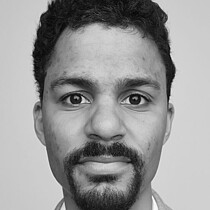
Project Title
Prioritization of Exome Data by Image Analysis
Project Description
The rapid development of new sequencing methods (Next Generation Sequencing) enables the fast and cost-effective analysis of all human genes. This development presents human genetics and in particular clinical genetics with the challenges of interpreting the large amounts of generated data. Among the thousands of neutral sequence variants, the one pathogenic mutation has to be found. Various bioinformatic approaches have been developed, which are based on the clinical-phenotypic description of the investigated patient (physical appearance, symptoms, laboratory findings ...) and on the properties of the detected variants (altered gene, allele frequency, degree of evolutionary conservation, type of variant ...). These methods offer good results, but there is still room for improvement. In clinical genetics, the face of a patient traditionally plays a key role in determining the diagnosis as approx. 40% of hereditary syndromological diseases show characteristic abnormalities of the facial morphology. Knowledge of these abnormalities is therefore of particular value for the clinical geneticist. The large number of hereditary syndromes (there are several thou- sand) and the rarity of the individual disease entities re- quire expertise based on decades of clinical experience. Modern machine-learning based image recognition pro- grams are able to learn these specific features of the facial gestalt from ordinary frontal photos of patients with genetic-syndromological diseases. Our research aims to evaluate these methods and to develop a machine-learning based pipeline, which– in addition to prior approaches- includes automated facial photogrammetry in sequence data analysis to enable an even more efficient diagnostic procedure.
PD Dr. med. Timo Alexander Auer
Charité – Universitätsmedizin Berlin, Department of Radiology (including Pediatric Radiology)
Email: timo-alexander.auer@charite.de
Fields of Research
- Multimodal liver imaging
- Interventional therapy of liver tumors
- MR imaging of glioma

Project Title
MRI Morphologic Noninvasive Subclassification of Hepatocellular Carcinomas – The »HepCasT«-Study
Project Description
Hepatocellular carcinomas (HCCs) are a heterogeneous group of tumor subtypes with a different response behavior and prognosis. As a reaction, the World Health Organization (WHO) in its 5th version (updated in 2019) classifies no more two but eight subtypes, each with a different tumor biology and outcome. The new classification may serve as a key factor optimizing a more personalized therapeutic approach and therefore, especially diagnostic disciplines have to implement these new subtypes as soon as possible into their daily clinical routine algorithms. Imaging does play a key role in this situation. Newer and advanced MRI techniques allow a precise
tissue characterization. Furthermore, with the help of latest generation hepatobiliary contrast agents it is possible to quantify and measure the organ function and specific uptake behavior of focal liver lesions. Another approach that hold promise for advancing the characterization of HCCs heterogeneity is the use and development of artificial intelligence (AI)-based image postprocessing
algorithms including radiomics analysis. To date there aren’t any established imaging features correlating with any of the new WHO HCC-subtypes. The goal of our project is to identify imaging biomarkers correlating with the new HCC-subtypes, helping to classify them noninvasively. As a next step with the help of our collaborators we will facilitate a radiological-pathological reference database. In a third step and with the help of the data we curated we will try to identify morphologic imaging characteristics by the use of AI-based post-processing algorithms to classify the subtypes noninvasively and to predict / estimate patients individual therapy response and prognosis. The last challenge will be to implement these algorithms into daily clinical routine, we therefore have to identify interface dilemmas and present smart solutions to solve them. We are convinced that by implementing the updated WHO-criteria into clinical workflows current believes and guidelines in the diagnosis and therapy of HCC will change. The results of our project may provide the knowledge to represent as a cornerstone in imaging and therapy assessment of HCC to improve a personalized therapy approach.Dr. med. Michael Sören Balzer
Charité – Universitätsmedizin Berlin Department of Nephrology and Medical Intensive Care
Email: michael-soeren.balzer@charite.de
Fields of Research
- Acute kidney injury
- Chronic kidney disease
- Single cell transcriptomics/epigenomics

Project Title
Endophenotypes of Kidney Disease Progression at the Single Cell Level
Project Description
aps in our understanding of the transition from acute kidney injury (AKI) to chronic kidney disease (CKD) remain a major unmet medical need due to the lack of effective therapeutics for >850 million people worldwide. Although several events have been identified that lead to progres-sion from AKI to CKD (AKI-to-CKD transition), a key bot-tleneck is our lack of understanding of what exactly characterizes adaptive and maladaptive repair, respec-tively. In the 21st century, nephrologists still group kidney disease based on clinical and histopathological classi-fications developed centuries ago. Single cell technolo-gies have the potential to fundamentally improve our knowledge of kidney disease development because they capture molecular mechanisms that underlie disease drivers. This project aims to uncover cell type-specific endophenotypes, signatures characterizing progres-sion (AKI-to-CKD transition), and regeneration (successful repair) alike. Leveraging state-of-the-art single cell tech-nologies in a heterogeneous patient population mapping major etiologies of AKI, and sampling human kidney cells both invasively and non-invasively via urine, this project aims at uncovering potentially paradigm-shifting insights into kidney disease progression that will help us target therapies based on cell states rather than preconceived disease classifications. Patient-individual tubuloids derived from urine kidney cells will serve as validation platform for in silico findings.
Dr. med. Frederik Bartels
Charité – Universitätsmedizin Berlin, Department of Neurology and Experimental Neurology
Email: frederik.bartels@charite.de
Fields of Research
- Autoimmune Encephalitis
- Neuroimmunology
- Neuroimaging

Project Title
Longitudinal Structural Brain MRI Analysis and Cognitive Outcome in Anti-NMDA-Receptor Encephalitis
Project Description
Anti-NMDA receptor encephalitis (NMDARE) is the most common form of autoimmune encephalitis, a group of recently identified autoantibody-associated inflammatory brain disorders. It mainly affects young women and children but can occur at any age. The clinical course is usually monophasic with severe neurological and neuropsychiatric symptoms. Most patients have a good outcome based on physical disability after 24 months. However, recent studies and observations from clinical practice show considerable cognitive deficits after the acute phase. The long-term outcome and course of these cognitive deficits as well as the underlying mechanisms are still unknown and have not been systematically investigated. Interestingly, structural brain damage visualized on routine cerebral magnetic resonance imaging (MRI) has only been identified in around 50% of patients, despite a severe clinical course in most cases. Previous studies indicate that the presence of MRI changes correlates with a worse outcome. However, a systematic classification of these MRI changes and in particular their clinical relevance remains unclear. The aim of this project is, therefore, to systematically investigate i) the longitudinal structural brain damage using advanced quantitative MRI techniques and ii) assess its role as a possible correlate and predictor for persistent clinical and cognitive long-term deficits in NMDARE patients. The detailed MRI analyzes combined with specific assessments of neuropsychological and clinical outcome will help to better understand the disease mechanisms and longterm effects of this autoimmune brain disease. Overall, the project will thus contribute to increase diagnostic accuracy and identify more personalized therapeutic strategies in order to improve long-term outcome and help regain full cognitive performance and quality of life in these mostly young patients.
Dr. med. Nick Lasse Beetz
Charité – Universitätsmedizin Berlin, Department of Radiology (including Pediatric Radiology)
Email: nick-lasse.beetz@charite.de
Fields of Research
- Opportunistic Screenings
- Digital Health and Artificial Intelligence
- Cardiac and Prostate Imaging

Project Title
Advanced Body Composition Imaging in Clinical Routine
Project Description
Opportunistic screenings in imaging studies provide additional valuable information unrelated to specific clinical indication, but unfortunately have gone largely unused. One of the most relevant incidental imaging information is body composition analysis. Body compo-sition describes the distribution of muscle, bone, and fat in the human body, and is increasingly being used to identify patients who suffer from sarcopenia, cachexia, and/or obesity. We have trained and evaluated an arti-ficial intelligence (AI)-based software tool for rapid and automatic segmentation of CT images acquired without increasing a patient’s radiation dose or examination time. The individual metabolic information derived from AI-based body composition analysis can improve indi-vidual risk stratification. In several retrospective studies, we have already shown the feasibility and importance of AI-based body composition analysis. The aim of the project is to further improve the AI-based body compo-sition analysis by creating and establishing a 3D-volume tissue segmentation. The possible influence of AI-based body composition parameters on clinical outcomes are going to be compared with conventional measurements like bioimpedance analysis. Automatic opportunistic screenings in imaging will be used in diverse clinical settings and cohorts including patients who are sched-uled for organ transplantation. This digital health project has an emphasis on image-based precision medicine and value-added initiatives.
Dr. med. Philip Bischoff
Charité – Universitätsmedizin Berlin, Institute of Pathology
Email: philip.bischoff@charite.de
Fields of Research
- Single-cell RNA sequencing
- Tumor microenvironment
- Lung cancer

Project Title
Dissecting Tumor Microenvironment Heterogeneity and its Impact on Prognosis and Therapy Response in Non-Small Cell Lung Cancer
Project Description
Immunotherapy is an important pillar in systemic therapy of lung cancer. Although current patient stratification is based on PD-L1 expression, the predictive value of PD-L1 is limited and biomarkers that are more precise are urgently required.
Immunotherapies modulate interactions between tumor cells and their microenvironment in order to unleash anti-tumor immune responses. Consequently, novel pre-dictive biomarkers taking into account the cellular com-plexity and heterogeneity of the tumor microenvironment may add predictive precision to patient stratification for immunotherapy.
The comprehensive analysis of the tumor microenviron-ment has long been complicated by its cellular diversity. In a recent project, we gained unprecedented insights into tumor microenvironment heterogeneity by sin-gle-cell RNA sequencing. Now, I will advance this approach in combination with multiplex imaging to identify novel microenvironment-based biomarkers to predict response to immunotherapy.Dr. med. Aitomi Bittner
Charité – Universitätsmedizin Berlin, Department of Hematology, Oncology and Cancer Immunology
Email: aitomi.bittner@charite.de
Fields of Research
- Lymphomagenesis
- Personalized Medicine
- Patient‐Derived Xenografts
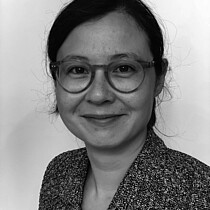
Project Title
A Lymphoma-Immune Cell-Liver Multi-Organ Chip as Predictor Platform for Basic Research and Personalized Medicine
Project Description
The standard of care for diffuse large B-cell lymphoma (DLBCL) has not changed in decades, despite advanced molecular investigations into its pathogenesis.
Although the R-CHOP chemo-immunotherapy regimen has curative potential, one in three patients eventually succumbs to the disease. While early phase clinical trials using targeted therapies (TTs) showed signs of efficacy, recent randomized phase III trials in DLBCL have consis-tently failed. The precise mechanisms of individual (in) sensitivity to TT remain elusive, but could be related to tumor heterogeneity, intramolecular target alterations, activation of target-bypassing signaling cascades, alter-ations in drug metabolism or, even less well understood, an altered tumor-immune synapse. In close collaboration with colleagues from the laboratory of Prof. Sina Bartfeld (Department of Medical Biotechnology, TU Berlin), we have established our multi-organ chip with a human lymphoma/immune cell interface and human liver spher-oids. A microfluidic circuit connects all organ compart-ments via a micropump driven heartbeat mimicking perfusion. Based on this multi-organ chip, we aim to investigate activity changes within the cellular immune compartment due to drug-induced altered tumor immu-nogenicity or drug-induced immune modulation, which collectively affect drug-induced immune-mediated cyto-lytic capacity.
Our future goal is to further develop our multi-organ chip to assemble primary human lymphoma samples in their same-patient immune context with human liver spheroids for human hepatic drug metabolism. This will help us to address a central tenet of personalized cancer medicine, namely, to predict drug efficacy prior to the actual treatment decision at the bedside. To validate this patient-derived multi-organ chip, the results need to be correlated with the actual clinical treatment out-come of the patient. Patients from whom we collect the material are therefore enrolled in our clinical trials. Co-clinical trials in our multi-organ chip can provide new biological insights and predict the long-term outcome of individual treatment candidates before they are actu-ally administered to patients.Dr. med. Felix Boschann
Charité – Universitätsmedizin Berlin, Institute of Medical Genetics and Human Genetics
Email: felix.boschann@charite.de
Fields of Research
- Rare diseases
- Molecular genetics
- Genome biology
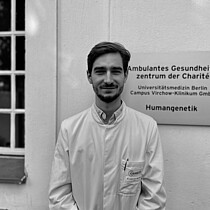
Project Title
Genome Sequencing of Hereditary Connective Tissue Disorders
Project Description
Hereditary connective tissue disorders (HCTDs) are a heterogeneous group of rare diseases that can affect different organ systems. Hereditary thoracic aortopa-thies (H-TAD) comprise a subgroup that can present as isolated aortic disease or as part of a multisystemic disease such as Marfan syndrome or Ehlers-Danlos syn-drome. Approximately 95 % of thoracic aortic dissections occur in relatively young, previously asymptomatic patients without cardiovascular risk factors. Early genetic diagnosis is essential for individual patient management, such as the timing of preventive surgery.
The risk of developing a thoracic aortic aneurysm can often be explained by a sequence variant in one of 11 definitive causative genes. Routine diagnosis (i.e. panel sequencing) leaves more than 70 % of cases unsolved. We hypothesise that genome sequencing and RNAseq will increase this diagnostic yield. To this end, 200 patients with inherited aortic and complex connective tissue diseases will be enrolled in this study over the next two years. We hope to identify 1) new disease genes 2) new intragenic non-coding variants (e.g. deep intronic and UTR variants) and 3) extragenic regulatory variants.
To improve the interpretation of genetic variants, we will perform detailed and standardised phenotyping of the cohort and implement new prediction tools and variant callers into our software. We also plan to generate a map of regulatory elements in disease-relevant tissues for the evaluation of non-coding variants.
The identification of new causative variants will have a direct impact on the clinical care of affected individuals and their families. In addition, the discovery of new dis-ease genes or regulatory variants will allow a better understanding of our genome and the underlying molec-ular pathomechanisms of thoracic aortic aneurysm and dysregulated ECM homeostasis.Dr. med. Laure Bosquillon de Jarcy
Charité – Universitätsmedizin Berlin, Speciality Network: Infectious Diseases and Respiratory Medicine
Email: laure.bosquillon-de-jarcy@charite.de
Fields of Research
- Emerging Zoonoses
- Viral Pathogenesis
- Innate Immunity

Project Title
The Role of Peripheral Immune Cells to Monkeypox Virus Pathogenesis
Project Description
Monkeypox (MPOX) virus led to a rapidly evolving pan-demic in May 2022, with firstly over 80.000 cases reported beyond the African continent. While most infected indi-viduals display a self-limiting disease with singular pox-like lesions, some endure systemic viral spread leading to whole body rash with risk for necrosis, organ loss and death. Since intra-host dissemination and tropism of MPOX virus are largely unexplored in humans, the cause for this clinical variability remains unknown. To elucidate the cellular tropism of MPOX virus, we exposed human peripheral blood mononuclear cells (PBMCs) from healthy donors with a currently circulating MPOX clade 2 virus isolate in absence and presence of interferon-α2a. In kinetic experiments, we identified increasing MPOX virus DNA quantities in cell lysates, but apparently not super-natants, that peaked five to six days post exposure, sug-gesting susceptibility of PBMCs to infection. IFN-α2a treatment markedly reduced MPOX virus DNA quantities, suggesting that infection is sensitive to type I interferons. Using scRNA-sequencing of MPOX virus-infected PBMCs, we are currently identifying viral RNA-positive immune cell subsets and characterizing the corresponding gene expression profile at the single cell level. Finally, coin-fections with MPOX virus and HIV-1 have been widely reported during the MPOX virus pandemic, as both virus infections affect the same risk group of men who have sex with men (MSM). Clinical observations reported more severe MPOX virus infections in immunocompromised patients compared to immunocompetent individuals. Therefore, we aim to investigate possible interrelations between MPOX virus- and HIV-1-infection at the level of viral replication and infectivity.
Our results have the potential to illuminate aspects of intra-host propagation of MPOX virus that may involve a lymphohematogenic route for replication, and will widen our knowledge on poxvirus pathogenesis, there-fore contributing to the global preparedness in times of frequently emerging zoonoses.PD Dr. med. Keno Bressem
Charité – Universitätsmedizin Berlin, Department of Radiology (including Pediatric Radiology)
Email: keno-kyrill.bressem@charite.de
Fields of Research
- Deep Learning in Computer Vision and Natural Language Processing Focussed on Radiology

Project Title
Improving the Generalizability of Radiological Deep Learning Models Through a Prospective Study Infrastructure
Project Description
Translating deep learning models into clinical practice is a fundamental challenge and is expected to grow in importance. Deep learning models often suffer from low generalizability when applied to new data, which means that the accuracy of the models used is much lower than the accuracy achieved during development under controlled conditions. To prevent this, deep learning models should be clinically tested before they are used. To accelerate this process, I am developing an infrastructure at Charité Universitätsmedizin Berlin to facilitate the prospective evaluation of deep learning models. Together with my team, we aim to integrate deep learning algorithms into the radiological productive system (the Picture Archiving and Communication System – PACS). This will allow us to immediately test and continuously improve developed algorithms until they are highly reliable and can be used in clinical practice.
PD Dr. med. Woo Ri Chae, MSc
Charité – Universitätsmedizin Berlin, Department of Psychiatry and Neurosciences
Email: woo-ri.chae@charite.de
Fields of Research
- Psychiatry
- Neuroscience
- Epidemiology

Project Title
Effects of Dopamine Modulation on Motivational and Motor Function in Major Depression Characterized by Low-Grade Inflammation
Project Description
Major depressive disorder (MDD) is a leading cause of disability worldwide and has many adverse mental and somatic health consequences including cardiometabolic diseases. However, about one third of patients do not achieve full remission from depression even after mul-tiple antidepressant treatments – potentially due to its clinical heterogeneity. Chronic low-grade inflammation is present in more than a quarter of patients with MDD, is associated with treatment resistance, and may rep-resent the underlying substrate linking depression and cardiometabolic diseases.
A large body of evidence on depression heterogeneity point to an »immunometabolic« subtype characterized by the clustering of immunometabolic dysregulations with atypical behavioral symptoms related to energy homeostasis. Motivational and motor impairments reflected by symptoms of anhedonia and psychomotor retardation in MDD are closely related to alterations in energy homeostasis, are associated with increased inflammation, and may be a direct consequence of the impact of inflammatory cytokines on mesolimbic dopa-mine (DA) signaling.
In the proposed project, we will examine the effect of DA stimulation on motivation and motor function in patients with MDD and healthy controls and the role of inflammation using a double-blind, randomized, place-bo-controlled, cross-over design. If successful, our study would provide crucial evidence that pharmacologic strat-egies that increase DA may effectively treat inflamma-tion-related symptoms of anhedonia and psychomotor retardation in MDD. Similar pharmacological strategies may have clinical utility in other neuropsychiatric pop-ulations with increased inflammation as well.Dr. med. An-Bin Cho
Charité – Universitätsmedizin Berlin, Department of Psychiatry and Neurosciences
Email: an-bin.cho@charite.de
Fields of Research
- Social cognition
- Emotional abuse
- Childhood trauma

Project Title
Impact of the Oxytocin System on Empathy in Individuals with a History of Childhood Emotional Abuse
Project Description
Emotional abuse in childhood (CEA) is defined as repeated behaviors by a caregiver that communicate to the child that they are worthless, flawed, unloved, unwanted, dangerous, or only useful for fulfilling the needs of others. CEA is often associated with interpersonal deficits, emo-tional dysregulation, and somatic and psychiatric disorders in adulthood. It is also the strongest predictor for therapy-resistant depression in adulthood. However, the neurobiological and psychological consequences of CEA are scarcely researched. CEA is associated with changes in the endogenous oxytocin system and in empathy in adulthood. Empathy is an important aspect of social cognition and consists of a cognitive component, i.e. the ability to recognize, understand, and empathize with the feelings, thoughts, and intentions of others, and an emotional component, i.e. the ability to feel the same as other people. The oxytocin (OT) system plays a crucial role in cognitive and emotional empathy. Several meta-analyses have shown improved accuracy in emotion recognition after exogenous OT administration in healthy subjects and patient populations. Initial evidence suggests improved emotion recognition in healthy individuals with heterogeneous childhood trauma after oxytocin administration and increased emotional empathy in healthy individuals and those with borderline personality disorder. The exact mechanism of action of OT and the role of CEA in empathy are poorly understood. Current data on the effects of OT suggest that its effects depend on the current context and individual variables (e.g., CEA). In this planned study, we aim to investigate whether the enhancing effect of OT on empathy is present in healthy female participants with CEA. The hypotheses are that 1) participants with CEA will demonstrate reduced cognitive and emotional empathy (especially reduced emotion recognition) compared to healthy participants (group effect) and that 2) a single dose of 24 IU of synthetic OT nasal spray (Syntocinon®) in healthy participants with CEA will lead to a greater improvement in cognitive and emotional empathy compared to healthy participants without CEA (group × treatment interaction).
PD Dr. med. Federico Collettini
Charité – Universitätsmedizin Berlin, Department of Radiology (including Pediatric Radiology)
Email: federico.collettini@charite.de
Fields of Research
- Image-Guided Ablative Tumor Therapy
Project Title
The Immune Modulation Effect of Locoregional Therapies and Its Potential Synergy with Immunotherapy
Project Description
Recent successes in the field of immuno-oncology have generated considerable interest in the investigation of approaches that combine standard of care treatments with immunotherapies. Locoregional therapies (LT) represent attractive candidates for this approach given the potential for immune system stimulation through the large-scale release of tumor-associated antigens (TAA) following LT-induced cell death. In fact, LT-induced necrosis of tumor cells leads to massive release of tumoral neoantigens, facilitating recruitment and activation of dendritic cells into the microenvironment. This effect can be leveraged to transform an immunosuppressive microenvironment that is not conducive to checkpoint inhibitor therapy into an immunosupportive setting, in which systemic therapies might be more effective.
Dr. med. Leon Alexander Danyel
Charité – Universitätsmedizin Berlin, Department of Neurology and Experimental Neurology
Email: leon.danyel@charite.de
Fields of Research
- Neurovascular disorders
- Diffusion-weighted imaging
- Ocular vascular occlusive disorders

Project Title
Retinal Diffusion-Weighted Imaging in Central Retinal Artery Occlusion
Project Description
Central retinal artery occlusion (CRAO) constitutes a medical emergency as it leads to persistent and debilitating visual impairment of the affected eye. As the chance for visual recovery decreases with the duration of retinal ischemia, therapeutics to achieve retinal reperfusion have to be administered as early as possible. We recently identified retinal diffusion restrictions (RDR) as a frequent finding in CRAO patients on standard brain diffusion-weighted magnetic resonance imaging (DWI MRI). Our research aims to further investigate RDR and their utility for early diagnosis in CRAO with a series of retrospective and prospective clinical trials. Our main focus lies on the application of novel DWI sequence techniques, such as readout-segmented DWI and small field of-view DWI to improve the detection of diffusion restrictions in retinal ischemia. Finally, we hope to further expand the application of retinal diffusion-weighted imaging as a diagnostic modality to other ocular vascular occlusive diseases.
Dr. med. Magdalena Danyel
Charité – Universitätsmedizin Berlin Institute of Medical and Human Genetics
Email: magdalena.danyel@charite.de
Fields of Research
- Rare genetic disorders
- Lymphovascular diseases
- Lymphatic malformations

Project Title
A Translational Approach to Improve Healthcare of Patients with Rare Lymphovascular Diseases
Project Description
Lymphovascular diseases (LVD) represent an underdiagnosed and heterogeneous group of maladies that occur sporadically or as a part of a syndromic disorder (e. g. overgrowth syndromes with vascular involvement). Due to the pathophysiological complexity of LVD, specialized, interdisciplinary care structures are required. Our project represents an innovative patient care concept to provide personalized medicine in LVD: We organize multicentric, interdisciplinary case conferences to provide a detailed clinical characterization, essential for further phenotype-based evaluation of genetic data. Using Next Generation Sequencing we analyze the protein-coding and non-coding regions of the human genome using DNA from blood, as well as affected tissue samples. Thereby identified genetic variants are then evaluated for pathogenicity utilizing genetic databases, bioinformatic prediction tools as well as functional studies. Using this approach, both the confirmation of a known genetic disorder, as well as the identification of new candidate genes in LVD can be achieved. Identifying disease-associated genes improves our understanding of LVD pathogenesis and is the first crucial step for the establishment of novel therapeutic approaches. Moreover, our project also aims to assess the use of already available pharmaceuticals in LVD. For this, we establish individual endothelial or fibroblast cell lines for in-vitro testing. Through this process, the efficacy of different FDA-approved drugs is tested, providing important information for the optimization of current patient therapy.
Dr. med. Uta Margareta Demel
Charité – Universitätsmedizin Berlin, Department of Hematology, Oncology and Cancer Immunology
Email: uta.demel@charite.de
Fields of Research
- Translational hematology and oncology
- B-cell lymphoma
- Immuno-Oncology

Project Title
Biomarker-Informed SUMO Inhibition for Improved Lymphoma Therapy
Project Description
Diffuse large B-cell lymphoma (DLBCL) is the most common type of aggressive non-Hodgkin lymphoma. Patients achieving remission after first-line immunochemotherapy have a good long-term prognosis, whereas survival is impaired at relapsed or refractory disease. Despite the striking success of immunotherapies in many tumor entities, latest trials on immune checkpoint blockade (ICB) in DLBCL have shown rather disappointing results. The poor response rate of DLBCL to ICB is partly attributed to an immune-cold tumor microenvironment (TME), which is frequently caused by genetic alterations. Within previous studies, we attributed SUMO inhibition (SUMOi) with strong immune-modulatory effects, emphasizing its potential to reactivate the TME. However, it is unclear which patient subgroups (biomarker-defined) would benefit from the addition of SUMOi to ICB and the impact of the most frequent genetic drivers of DLBCL on the TME is poorly understood. Within this project we aim to comprehensively characterize the impact of driver mutations and the SUMO state on the TME in DLBCL patients with the ultimate goal of pinpointing biomarkers of an immune-cold TME. Furthermore, we will investigate the efficacy of SUMOi to reactivate the TME in these bio-marker-defined subgroups aiming to develop biomarkerinformed SUMOi-based combination therapies with ICB. In summary, this project will define biomarkers to drive forward translation of SUMOi addition to cancer immunotherapies in biomarker-defined subpopulations of DLBCL.
Dr. med. Sophy Denker
Charité – Universitätsmedizin Berlin, Department of Hematology, Oncology and Cancer Immunology
Email: sophy.denker@charite.de
Fields of Research
- Hematology & Oncology
- Multi-Omics
- Lymphoma Biology
- Machine Learning
- Novel Study Design
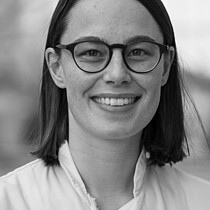
Project Title
Anticipation, Prediction and Optimization of the Therapeutic Outcome of Lymphoma Patients Using Digital Model Analysis
Project Description
In order to improve the long-term survival of high-risk lymphoma patients by personalized medicine, the development of new prediction parameters through a multimodal evaluation approach is necessary. This interdisciplinary project in close cooperation with Prof. Dr. Roland Eils at the BIH Center for Digital Health combines clinical data, basic tumor biology research, and current bioinformatics analysis methods and is thus unique to this point and represents an innovative and conceptual new orientation of tumor precision medicine.
PD Dr. Hedwig Deubzer
Charité – Universitätsmedizin Berlin, Department of Pediatric Oncology and Hematology
Email: hedwig.deubzer@charite.de
Fields of Research
- Pediatric Precision Oncology
- Liquid Biopsies
- Diagnostics development

Project Title
Liquid biopsy-based diagnostics for pediatric solid tumors
Project Description
The Deubzer laboratory research program addresses the three central monitoring areas essential for optimal personalized treatment of children with high-risk neuroblastoma: (1) therapy response assessment, (2) minimal residual disease monitoring and (3) actionable target identification. The primary aim is to accelerate transfer of liquid biopsy-based approaches to the clinic within these monitoring areas to make clinical phenotypes of residual, refractory and/or relapsed disease predictable. Implementing our molecular techniques to characterize cell-free nucleic acids, proteins, metabolites and exosomes in biofluids is expected to improve patient monitoring, secondary treatment selection and, ultimately, overall patient survival. Liquid biopsies are likely to better reflect spatial intratumor heterogeneity, tumor evolution and drug sensitivities, thereby, greatly contributing to personalized medicine. Our analyses are focused on validating recently identified candidate biomarkers in large patient cohorts and on expanding the existing biomarker portfolio. A newer focus is translating predictive biomarkers/signatures identified in multi-omics data from liquid biopsies into diagnostic kits for clinical application. We assess test sensitivity in multicenter round robin tests, and measure complementarity in predictive power within the framework of clinical trials. Maintaining, expanding and updating the biobanking infrastructure, technology platforms and data analysis tools supporting the paradigm shift towards personalized care of patients with high-risk neuroblastoma is an underlying essential part of work in the Deubzer laboratory, which we have plans to extend to pediatric patients with other serious and debilitating solid cancers.
Dr. med. Wiebke Düttmann-Rehnolt
Charité – Universitätsmedizin Berlin, Department of Nephrology and Medical Intensive Care
Email: wiebke.duettmann@charite.de
Fields of Research
- Kidney Transplantation
- Surveillance of Immunosuppressed Patients
- Opportunistic Infections
- Digitalization of Health Care System

Project Title
Intersectoral eHealth concept of care in patients with an OPAT
Project Description
Patients with certain infections require long-term intravenous (IV) antibiotic therapy, and, as IV therapy is usually only possible at hospital, patients need to stay there although they feel well after a short period. Outpatient parenteral antibiotic therapy (OPAT) is an innovative approach, which enables patients with long-term IV antibiotic therapy, to go home and applicate antibiotics on their own or with help of specialized nurses.
However, data silos as well as no or little communication between patients, OPAT-nurses, and doctors lead to complications and misunderstandings. Patients feel alone and some even scared. Doctors are insecure. Thus, only a small group receives access to this modern concept. The current project builds on an existing digital infrastructure with a patient app, electronic health record (EHR) called TBase, and telemedicine team. Aims of this current project are (1) to design a patient journal to support the connection between patients with OPAT and the doctors as well as nurses via an app, (2) to integrate a sufficient “eRezept” compatible to Gematik, (3) to visualize microbiological test results in the mentioned EHR via logical observation identifiers names and codes (LOINC), (4) to design an app in order to seek questionnaires for patient reported outcome measures (PROMS) via health level 7 (HL7) and fast healthcare interoperability resources (FHIR) and visualization in the EHR via LOINC, and finally (5) to initiate the implementation of SNOMED CT.
The patient journey shall, in a first step, be developed in the frame of an explorative and observational study, and, in a second step, be evaluated for usefulness by a multicenter randomized controlled trial.Dr. med. Tomasz Dziodzio
Charité – Universitätsmedizin Berlin, Department of Surgery
Email: tomasz.dziodzio@charite.de
Fields of Research
- Obesity
- Kidney transplantation
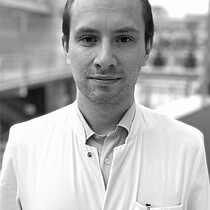
Project Title
Pathomechanisms of Obesity in the Field of Kidney Transplantation
Project Description
Morbid obesity is a globally increasing disease and affects 23% of the population in Germany. It is associated with numerous co-morbidities and a high mortality. Obese kidney transplant recipients show higher rates of delayed organ function and rejections. Therefore, obese kidney transplant candidates are often denied access to organ transplantation. In Germany 50% of transplantation centers use body mass index-linked thresholds as a selection criterion to grant access to the transplant waitlist. Bariatric surgeries are discussed as a solution to this ethical dilemma. Their safety and effectiveness have been confirmed in case studies and retrospective analyses, but positive effects on organ and patient survival have not been proven prospectively. Furthermore, it has been shown that the expression of inflammatory markers, such as IL-6 and TNF-α, as well as CD4+ and CD8+ T lymphocytes can be affected by bariatric surgeries. However, it is still unclear what additional value this represents for transplant candidates. This project aims to investigate the impact of obesity and weight loss therapies for patients before and after kidney transplantation. We plan to investigate the pathomechanisms of obesity on graft function and the immunological response in a rat model with obese Zucker Diabetic Fatty rats. In addition, a clinical program for obese kidney transplant candidates will be initiated to determine the metabolic and immunological effects of conservative versus surgical weight reduction programs in these patients.
PD Dr. med. Julius Emmrich
Charité – Universitätsmedizin Berlin, Department of Neurology and Experimental Neurology
Email: julius.emmrich@charite.de
Fields of Research
- Digital Health
- Global Health

Project Title
Mechanisms of Neuronal Dysfunction and Death in Sepsis-associated Cognitive Impairment
Project Description
There is compelling evidence that survivors of critical illness that enter medical care with no evidence of cognitive impairment are often discharged with severe de novo neurocognitive decline that is long-lasting and likely permanent. More than one in three patients have profound cognitive impairments for at least one year after release from an intensive care unit (ICU) and as medical care is improving and the number of ICU admissions is increasing worldwide, the number of survivors of critical illness is growing. Sepsis, a potentially life-threatening systemic inflammation, is a leading cause of ICU admission and commonly precipitates severe long-term cognitive impairment. Recent studies aiming to elucidate the neuronal correlate of cognitive demise have found neuroinflammation (i.e. activation of microglia, the immune cells of the central nervous system), and neuronal death to be responsible for diffuse cerebral damage and eventually brain atrophy. However, the underlying pathophysiology remains poorly understood and there is no available treatment. Microglial phagocytosis (i.e. engulfment and degradation of a target) is a crucial process to maintain brain homeostasis during injury as it prevents tissue damage resulting from leakage of toxic intracellular components from dying cells. Thus, it has previously been assumed that microglial phagocytosis of neurons is entirely beneficial and always preceded by a cell’s commitment to cell death. However, based on our recent observations indicating that microglia can engulf and thereby eliminate functional neurons and/or synapses during neuroinflammation, it is conceivable that neuronal and/or synaptic loss following sepsis is executed by microglial phagocytosis. The aim of this project is to investigate if phagocytosis of neurons and/or synapses is beneficial or detrimental for cognitive outcome following sepsis and this project will determine whether anti-phagocytic treatment may be a therapeutic option for preventing cognitive deficits in sepsis survivors.
Dr. med. Matthaeus Felsenstein
Charité – Universitätsmedizin Berlin, Department of Surgery
Email: matthaeus.felsenstein@charite.de
Fields of Research
- Pancreatic molecular carcinogenesis
- Pancreatic precursor lesions
- Pancreatic tumor microenvironment

Project Title
Personalized Therapy Response of PDAC in Correlation with Presence or Absence of Extrachromosomal DNA (EcDNA)
Project Description
The complex genomic aberrations of the aggressive Pancreatic Duct Adenocarcinoma (PDAC) have not yet been sufficiently characterized. Chromothripsis has been shown a critical mechanism in the molecular pathogenesis of PDAC and is deemed responsible for accelerated tumor progression. Subsequent chromosomal recombi-nation presumably leads to molecular by-products such as extrachromosomal DNA (ecDNA). Genome wide analyses estimated that ecDNAs are present in around 15–20 % of PDAC patients. The exact clinical relevance of ecDNA structures on PDAC patients are not sufficiently examined. We therefore seek to identify ecDNA signatures in enriched tumor samples. Three-dimensional tumoroid culture will be employed to allow enrichment of the cancer epithelium from 50 resected specimen. We will subsequently perform modern deep sequencing methodologies to identify characteristic ecDNA signatures, also using state-of the-art computational algorithms. In addition, clinical outcome and follow-up of patients will be correlated with detailed genetic information. Ultimately, we conduct cytotoxicity assays with our tumoroid cultures, to directly assess the functional impact on PDAC tumor cells. This study is aimed at expanding our knowledge about the molecular determinants of pancreatic carcinogenesis and may have direct clinical impact on diagnostics and therapies of this aggressive disease.
Dr. med. Florian Nima Fleckenstein
Charité – Universitätsmedizin Berlin Department of Radiology (including Pediatric Radiology)
Email: florian.fleckenstein@charite.de
Fields of Research
- Molecular Imaging
- Osteoarthritis and Regenerative Therapies
- Interventional Oncology

Project Title
Molecular MR Imaging of Extracellular Matrix and Inflammatory Activity for the Early Detection of Osteoarthrosis
Project Description
Osteoarthritis (OA) is a common degenerative joint dis-ease that affects a significant portion of the population, particularly those over the age of 60. Despite advance-ments in imaging technology, joint damage is often only detectable in the advanced stages of OA, leaving little room for curative approaches.
Studies have shown that OA is a cytokine-driven process involving low-grade inflammation affecting joint tissue homeostasis, as well as subchondral regions and sur-rounding structures such as muscles, capsules, and lig-aments. Matrix metalloproteases, specifically ADAMTS4, play a crucial role in this process through the degradation of intra-articular aggrecan. Our group has identified a peptide probe in the one bead one compound (OBOC) screen that binds exclusively to ADAMTS4, which can be coupled with an MR-active Gd-DOTA complex or fluores-cent dye via a lysine linker. By using this probe for molecular imaging with MRI, we aim to detect and quantify ADAMTS4 as a molecular tar-get. This could potentially make the pathogenetic low-grade inflammation of early OA clinically detectable for the first time, allowing for earlier diagnosis and more effective treatment strategies. Moreover, this could lead to a better understanding of the pathophysiology of OA and contribute to the development of curative treat-ments for this chronic disease.
To establish this new methodology, we plan to conduct a longitudinal, exploratory study in the Dunkin-Hartley guinea pig animal model. By doing so, we hope to pave the way for innovative diagnostic and therapeutic approaches that extend beyond traditional radiological imaging techniques. The potential implications of this work are significant, as it could help to address a major public health concern and improve the quality of life for millions of individuals living with OA.Dr. Carina Flemmig
Charité – Universitätsmedizin Berlin, Department of Pediatrics, Division of Oncology and Hematology
Email: carina.flemmig@charite.de

Project Title
Improving Immunotherapy in Neuroblastoma
Project Description
Children with relapsed or refractory neuroblastoma have a <10% survival chance with current treatment options. It is reported that survival is improved in neuroblastoma patients with elevated tumor infiltration by endogenous T-cells. Modified T-cell therapy has been highly successful against leukemias cells but is less effective against solid tumors. Low T-cell recruitment and an immunosuppressive tumor microenvironment are the main hurdles preventing success against solid tumor. We aim to further develop immunotherapeutic approaches for neuroblastoma by combining genetically modified T-cells (CAR and TCR) with targeted therapy, e.g. Smac mimetics. Targeted therapeutic compounds can activate NFκB signaling, which sequentially alters the tumor cytokine profile and microenvironment. We envisage that combining targeted therapeutic compounds with genetically modified T-cells will increase the migration and invasion of modified T-cells, thereby increasing the efficacy of adoptive T-cell therapy in refractory or relapsed neuroblastoma patients. The project is designed to first investigate the effects of Smac mimetics on the two players in the compartment where immunotherapy is active: the genetically modified T-cells and the tumor cells (including their impact on their microenvironment). Then we will then assess efficacy of combination treatment in a novel 3D culture model before testing promising targeted therapeutic compounds in mice. Our aim is to provide the necessary information obtained in in vitro and in vivo experiments to design a phase I/II clinical trial to test this immunotherapy in patients with refractory and relapsed neuroblastoma and learn more about the immune – tumor cell interactions to optimize adoptive T-cell therapy.
PD Dr. med. Julian Friebel
Charité – Universitätsmedizin Berlin Department of Cardiology, Angiology and Intensive Care Medicine
Email: julian.friebel@charite.de
Fields of Research
- Protease-activated receptors
- Atherosclerosis
- Heart failure

Project Title
Thrombo-Inflammation in Cardiovascular Disease
Project Description
Protease-activated receptors (PARs) regulate platelet, endothelial, and immune cells as well as fibroblast and cardiomyocyte function. PARs are a family of G-protein- coupled receptors (PAR1–PAR4) with a unique activation mechanism via cleavage by the serine proteases of the coagulation cascade, like FXa and FIIa, immune cell-released proteases, and proteases from pathogens. Our group has shown that the tissue factor (TF)/FXa/ thrombin/PARs pathway plays a central role for the innate immune response in the heart during myocarditis. PARs regulate immune response not only by sensing pathogens but also by direct activation of platelets and immune cells, thereby mediating proinflammatory cytokine secretion and chemokine expression. Furthermore, endothelial
PARs activation, stimulates leukocyte adhesion, rolling, and migration. This cascade is initiated by TF. We have recently demonstrated that the treatment with the PAR1 antagonist, vorapaxar, reduced inflammation in a metabolic disease model. Furthermore, we have shown that
PARs are important regulators of adverse extracellular matrix remodelling. Activation of PAR1 and PAR2 is associated with cardiac fibrosis. PAR1 is the most abundant G-protein–coupled receptor in cardiac fibroblasts. We have shown that PAR2 is an important regulator of profibrotic PAR1 signaling and TGF-β-receptor signaling. Targeting the pleiotropic effects of the FXa/FIIa-PAR-axis, which go beyond the anticoagulatory effects of FXa inhibitors, reduced markers of cardiac fibrosis, and diastolic dysfunction in patients with heart failure with preserved ejection fraction (HFpEF). Therefore, intervening in the FXa/FIIa-PAR1/PAR2/TGF-β-axis might be a promising synergistic approach in a selected cohort of patients with HFpEF to reduce cardiac fibrosis and inflammation. Next, we will study the role of PARs during the pathogenesis of atherosclerosis and atrial fibrillation.Dr. med. Steffen Fuchs, MSc
Charité – Universitätsmedizin Berlin Department of Pediatric Oncology and Hematology
Email: steffen.fuchs@charite.de
Fields of Research
- Neuroblastoma
- Gene Expression Regulation
- Circular RNAs

Project Title
Evaluating Circular RNAs in Neuroblastoma as Potential Therapeutic Targets
Project Description
Neuroblastoma, an embryonal tumor arising from peripheral sympathetic neuron precursor cells, is the most common extracranial solid tumor of childhood. Approximately half of all children diagnosed with neuroblastoma present with high-risk disease, for which therapeutic options are aggressive and have limited cure rates of at most 40%. No curative therapeutic options currently exist for relapsed neuroblastoma, emphasizing the urgent need for the development of new strategies. Circular RNAs (circRNA) arise by a form of alternative splicing, termed backsplicing, and have recently emerged as a new class of non-coding RNAs important for regulating gene expression. They bind miRNAs or RNA binding proteins via specific sequences to inhibit their function and directly influence transcription. Circular RNAs were recently shown to be highly abundant in neural tissues, especially during development. This makes them particularly interesting for the pathogenesis of neuroblastoma. In this project, we will identify and functionally characterize candidate circRNAs in neuroblastoma. For this purpose, we will establish an RNA Sequencing pipeline to specifically detect circRNAs in neuroblastoma tissue samples covering the whole spectrum of disease. More- over, we will create cell line models that represent the most important genetic alterations in this tumor identity. Identified circRNAs will be validated in vitro in neuroblastoma cell lines and functionally characterized. Ultimately, our aim is to describe functional networks of circRNAs, inhibited miRNAs and downstream oncogenes, tumor suppressors or kinases. In this way, we hope to not only add to the current understanding of neuroblastoma pathogenesis, but also define new druggable targets and associated predictive biomarkers for high-risk disease.
Dr. med. Brigitta Globke
Charité – Universitätsmedizin Berlin, Department of Surgery
Email: brigitta.globke@charite.de
Fields of Research
- Liver Transplantation
- Kidney Transplantation
- Photoplethysmographic Visualization of Tissue Perfusion
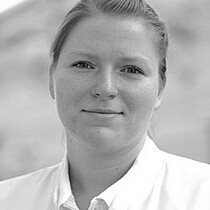
Project Title
Intraoperative AR Guided Photoplethysmographic Visualization of Tissue Perfusion
Project Description
The optimal perfusion of kidney grafts is vital for the long-term outcome after kidney transplantation. Perfusion can be infl uenced by the placement of the organ in the retroperitoneal space. Using photoplethysmographic visualization tools, minimal changes in colour, that cannot be detected by the human eye, should be made visible and give an idea about the quality of organ perfusion. In a second step this technology should be made available to the surgeon in the operating room via an augmented reality tool, so an optimal placement of the graft can be achieved in less time and with more security concerning optimal perfusion.
Dr. med. Carl Christoph Goetzke
Charité – Universitätsmedizin Berlin Department of Pediatric Respiratory Medicine, Immunology and Critical Care Medicine
Email: carl-christoph.goetzke@charite.de
Fields of Research
- Autoinflammatory diseases
- Autoinflammation
- Proteasome
- Regulation of inflammation

Project Title
Identification of Novel Genetic Mutations Involved in Proteasome-Assosiated Autoinflammatory Syndrome
Project Description
Juvenile Idiopathic Arthritis (JIA) is the most common chronic inflammatory disease in childhood. JIA is currently considered a single entity divided into 7 subtypes solely based on clinical findings. This diverse clinical presentation and a polymorphic response to conventional and biological treatments suggest its heterogeneity. Currently the choice of treatment is still empirical, different drugs can be administered for the same disease phenotype and the same drug can be used for multiple JIA subsets. JIA can undergo medication-free remission in roughly half of patients for currently unknown reasons, whilst the rest develop a persistent arthritis and need long-term care. The molecular mechanisms differing these two populations remains unclear. This suggests different disease endotypes. For JIA typical therapy involves intraarticular installation of steroids, making the synovial fluid and synovial fluid mononuclear cells equally available as peripheral blood mononuclear cells for in situ analysis of the inflammation.
Due to technical advances, it is now possible to pheno-type the immune system with single-cell resolution. Using this advanced immune phenotyping, we have already identified some immune signatures of JIA and immune targets of JIA using paired samples of blood and synovia. This way, we were able to show that the disease relevant cells which are highly prominent in the synovia are also found in the blood even though there are far smaller frequencies. This enables non-invasive diagnostic using high resolution blood analyses. During my Clinician Scientist fellowship I will extend our immune phenotyping of JIA by additinal immune cell types. Furthermore, identified targets will be tested for therapeutical potential. And with a clinical prospective trial, I moreover want to investigate to what extent the molecular signatures identified so far correlate with disease phenotypes, prognosis and treatment response. This will provide the basis for developing new biomarkers that will enable personalized management of JIA.Dr. med. Lea-Maxie Haag
Charité – Universitätsmedizin Berlin Department of Pediatric Respiratory Medicine, Immunology and Critical Care Medicine
Project Title
Metabolic Profiling of the Monocyte-Macrophage Compartment in Crohn’s Disease
Project Description
Intestinal macrophages (MΦ) have pivotal roles in maintaining intestinal homeostasis, but are also implicated in chronic pathologies of the gastrointestinal tract, such as inflammatory bowel disease (IBD). These opposing properties can be attributed to the enormous plasticity of these cells, reflected by different polarization states. Large advances in our understanding of the role of MΦ in inflammatory conditions is based on murine studies. In the murine tissue, resident MΦ are constantly replenished from blood monocytes that acquire an anergic phenotype under steady state conditions. However, when recruited to inflamed tissue, they become effector monocytes that actively drive inflammation and give rise to pro-inflammatory MΦ. Data on MΦ biology and function in inflammation of the human gut is sparse. It has been suggested, that an altered monocyte to MΦ differentiation is involved in the development and perpetuation IBD. However, many aspects of human intestinal MΦ biology remain poorly understood. The high degree of plasticity with involvement of different polarization states is one of the characteristic features of MΦ. Phenotypic changes are accompanied with changes in the cells metabolism that impact the effector functions of these cells. Alterations in the metabolic signature of MΦ are present in different human diseases. For example, an atypical pro-inflammatory polarization has been dis-cussed in metabolic diseases. The importance of MΦ metabolism is furthermore underlined by the study of tumour-associated MΦ, that impact the metabolic profile of the tumour microenvironment and have a major influence on disease progression and resistance to therapy. For inflammatory conditions, enforcing a pro-resolving MΦ phenotype could be a potential therapeutic approach. Changes in both monocyte and MΦ population have been reported in CD patients. However, it is unknown how these cells contribute to disease pathogenesis and progression. Moreover, it is not understood, if monocytes have a dual capacity to give rise to pro- or anti-inflammatory MΦ, e.g. depending on the microenvironment that they enter. Strikingly, the metabolic signature of both monocytes and MΦ in CD displays an unexplored field. The present project aims to define the role of monocyte- and MΦ-metabolism in small intestinal CD.
Dr. med. Nils Haep
Charité – Universitätsmedizin Berlin Departement of Surgery
Email: nils.haep@charite.de
Fields of Research
- Protease-activated receptor
- Atherosclerosis
- Heart failure
Project Title
Generation of Liver Tissue from IPSC to Investigate the Mechanism of SNP in Non-Alcoholic Fatty Liver Disease
Project Description
NASH is a leading cause of end-stage liver disease (ESLD), often evolving from NAFLD. Despite the high prevalence of NAFLD, only a fraction of individuals develop severe fibrosis. The disease’s complexity arises from environmental factors interacting with a polygenic susceptibility background. Studies have showed light on the genetic basis of NAFLD, revealing significant correlations with single nucleotide polymorphisms (SNPs). However, the role of SNPs in progressing from steatosis to NASH remains unclear, and creating appropriate disease models is challenging. Mouse models don’t reflect the identified SNPs, and access to human samples with specific genetic backgrounds is limited. Stem cell technology has the possibility to overcome these restrictions. Human-in-duced pluripotent stem cells (hiPSCs) can differentiate into hepatocytes with specific genetic backgrounds, help-ing model NAFLD progression in human livers, potentially elucidating the mechanisms behind the disease progression.
Dr. rer. nat. Dr. med. René Hägerling
Charité – Universitätsmedizin Berlin, Institute of Medical and Human Genetics
Email: rene.haegerling@charite.de
Fields of Research
- Lymphovascular Medicine
- Genetics
- Imaging

Project Title
Lightsheet Microscopy-Based 3D-Histology
Project Description
An improved and detailed understanding of the underlying pathology causing human diseases is key to improve diagnosis and treatment. However, current diagnostic gold standards are time-consuming, have intrinsic limitations and do not provide sufficient information for deep phenotyping and genotyping of the identical tissue sample. Therefore, the Hägerling group develops a fully
automated platform focused to help researchers, clinicians and pathologists increase their sample throughput from tissue preparation to analysis and answer the most challenging questions in diagnostics with the combination of tissue conserving spatial 3D information and genomics in daily routine work. The platform allows optical sectioning of the entire tissue samples including downstream genomic analysis in almost every research and routine sample. It enables researchers and pathologists to evaluate multiplexed biomarker staining of tissue samples with cellular 3D spatial resolution in a clinically feasible time and to incorporate new technologies, such as artificial intelligence, on the fly. Although, the platform is suitable for high throughput analysis, it can also be applied to study and diagnose rare (lympho)vascular diseases – the second research
focus of the group. In combination with in vitro tests and state-of-the-art sequencing techniques, the lab establishes an innovative approach to precision medicine for rare (lympho)vascular diseases ed to improve diagnosis and patient care.PD Dr. med. Arash Haghikia
Charité – Universitätsmedizin Berlin, Department of Cardiology, Angiology and Intensive Care Medicine
Email: arash.haghikia@dhzc-charite.de
Fields of Research
- Cardiovascular disease
- Cardiometabolic disease
- Atheroslerosis
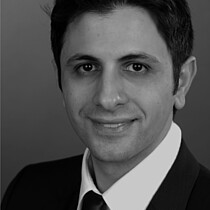
Project Title
Identification of Gut Microbiota Related Pathways in Cardiometabolic and Cardiovascular Disease
Project Description
A growing body of evidence suggests a crucial role of gut microbiota in regulatory processes of host metabolism and cardiometabolic disease development. Recent insights in metagenomic and metabolomic research have led to discoveries of new pathways linking intestinal microbial metabolism of dietary nutrients to metabolic profiles and cardiovascular disease risk.
Many of these pathways involve gut microbiota-related bioactive metabolites which impact host lipid and glucose metabolism or directly affect vascular or myocardial physiology, and thereby shape the cardiovascular disease risk.
The focus of my research group is the identification of novel gut microbiota-related metabolites which are associated with the cardiovascular disease risk in clinical studies. These metabolites are then further investigated in experimental disease models to decipher their potential causal role in the development of cardiovascular disease. In clinical studies, alteration of their circulatory levels e.g by dietary interventions is tested to explore their potential for modulating disease phenotype.
One of the lead candidates is imidazole propionate (ImP), a microbially generated amino acid-derived metabolite which contributes to the pathogenesis of type 2 diabetes. In our current studies, we investigate the effect of ImP on endothelial cell physiology and its role in atherosclerotic coronary artery disease. Moreover, its role in modulating the susceptibility to develop heart failure upon ß-adrenergic stress is currently investigated.
My long-term goal is to develop novel concepts based on targeting gut microbial pathways as a potential strategy to prevent or treat cardiovascular disease.Dr. med. Theresa Hartung
Charité – Universitätsmedizin Berlin, Department of Neurology and Experimental Neurology
Email: theresa.hartung@charite.de
Fields of Research
- iPSC-derived neurons
- Endogenous neuroprotection
- Oxygen glucose deprivation induced cell death

Project Title
Non-Hematopoietic Erythropoietin Splice Variants as Endogenous Neuroprotective and Neuroproliferative Substance
Project Description
Erythropoietin (EPO) is a glycoprotein induced by hypoxia, which inhibits apoptosis and promotes differentiation of progenitor cells. Due to its effects on hematopoietic cells, EPO is applied in anemia therapy. Through the same mechanisms, EPO protects neurons from apoptosis and promotes generation of new neurons. However, these endogenous repair mechanisms are not sufficient to
compensate damage induced by a stroke for example. Therefore, the therapeutic use of EPO in neurological disease is obvious but limited by hematopoietic side effects such as thromboembolism.
In preliminary studies, we showed that hypoxia-induced paracrine but not hypoxia-induced autocrine neuroprotection is transmitted by EPO. The detection of endogenous EPO splice variants revealed potential candidates transmitting autocrine neuroprotection. Especially one splice variant showed comparable neuroprotective effects without hematopoietic function in the mouse model. We are now testing the neuroprotective effects of this promising variant in the human model using iPSC-derived neurons and oxygen-glucose deprivation (OGD) as in vitro model of stroke. The iPSC model further allows evaluating potential effects on differentiation on neuronal stem cells and
herefore additionally acts as a model for adult neurogenesis and regeneration. Moreover, we want to analyze expression of this splice variant in human neuronal disease. Therefore, we apply a new
RNA hybridization method named BaseScope in post-mortem human brain. With this method, single mRNA molecules and their splice variants can be detected as single dots next to each other at single-cell resolution. In cooperation with Dr. Anna Zemella, group leader of Cell-free Protein Synthesis at the Fraunhofer Institute for Cell Therapy and Immunology Potsdam, necessary mounts of the splice variant are produced with a highly new and efficient cell-free method, which is a future technology for developing therapeutic proteins.Univ.-Prof. Dr. med. Dr. rer. nat. Ahmed Nabil Hegazy
Charité – Universitätsmedizin Berlin, Medical Department, Division of Gastroenterology, Infectiology and Rheumatology
Email: ahmed.hegazy@charite.de
Fields of Research
- Immunological Memory
- Host‐Microbiota Interactions
- Inflammatory Bowel Disease

Project Title
Deciphering Host-Microbiota Interactions in Inflammatory Bowel Disease
Project Description
The mammalian gastrointestinal tract is the largest organ of the human body beside the skin. It is the organ containing the largest number of immune cells and harbours a large and diverse population of commensal bacteria that exist in a symbiotic relationship with the host. In recent years, it has become increasingly clear that the composition of this gastrointestinal microbiome and its interaction with the host immune system strongly influences the health of the host. One disease complex, in which maladaptation in this host microbial dialogue is involved, is inflammatory bowel disease (IBD). Here, this maladaptation leads to an aberrant immune response in the gut, resulting in recruitment of various lymphoid and myeloid effector cell populations and inflammation of gut tissue. The exact aetiology of IBD remains uncertain, but it is a multifactorial disease that involves a complex interplay between genetic, environmental, microbial, and immune factors. Deciphering the complex interplay between both the genetic and environmental factors and the microbiota, is therefore of great biomedical importance. By combining mouse and human T cell immunology, mucosal immunology and animal models of disease as well as clinical specimens, we aim to identify environmental, microbial, and inflammatory drivers that promote maladaptation and gut tissue inflammation. We use a combination of cutting edge technologies, high through- put culture methods, cell and organoid cultures, physiological mouse models of colitis and analysis of well defined patient cohorts. We specifically aim to uncover new pathways involved in induction and regulation of tissue resident T cells, bacterial interaction and intestinal inflammation that may offer new therapeutic targets in inflammatory diseases such as IBD.
PD Dr. med. Bettina Heidecker
Department of Cardiology, Angiology and Intensive Care Medicine
Email: bettina.heidecker@dhzc-charite.de
Fields of Research
- Biomarker
- Amyloidosis
- Myocarditis
- Cardiomyopathy
- Cardiovascular disease

Project Title
Identification of Biomarkers in Inflammatory Cardiomyopathy and Potential Novel Therapeutic Targets
Project Description
The spectrum of inflammatory cardiomyopathies (iCMP) encompasses diverse etiologies. It is increasingly accepted that myocardial inflammation may influence heart function and outcomes even in “non-classic” iCMP such as amyloidosis. Understanding of the pathophysiology remains limited, which is reflected in a lack of targeted therapies. Steroids remain mainstay treatment in
most acute cases, yet they fall short in addressing the etiological specificity for effective treatment. Patients may progress to severe heart failure. Also, early detection is critical; myocarditis and sarcoidosis continue to be diagnosed late – sometimes only at autopsy. My team is dedicated to
address both challenges: 1) We develop diagnostic and prognostic markers for iCMP to enable timely intervention. 2) We decipher mechanisms of iCMP to pave the way for targeted therapies. My team identified novel targets and collaborates with industry to expedite translation of our findings into clinical practice.Dr. med. Maria Heinrich
Charité – Universitätsmedizin Berlin, Department of Anesthesiology and Operative Intensive Care Medicine
Email: maria.olbert@charite.de
Fields of Research
- Postoperative Delirium
- Cholinergic Pathways
- Geriatric Anesthesiology

Project Title
Association Between Cholinergic System Genetic Variants and Postoperative Delirium and Cognitive Dysfunction
Project Description
Postoperative delirium (POD) is a common neurocognitive complication that can lead to a permanent cognitive dysfunction (POCD). Although the exact pathophysiology is not entirely clear, inflammatory processes within the brain are thought to be involved. There is evidence that a central inflammation can be inhibited by cholinergic neurons, so that any impairment in the cholinergic neurotransmission is thought to be predisposing risk factor for POD/POCD. Due to an accumulation of such predisposing and precipitating risk factors, elderly patients are at a higher risk to develop POD/POCD. In this project, we aim to investigate an association between cholinergic system genetic variants and POD/POCD by examining patients from the BioCog Study (NCT02265263/ www.biocog.eu), which included patients ≥ 65 years undergoing elective surgery. Prior to the operation, patients provided blood samples and completed baseline neurocognitive test batteries. Each patient was visited daily
for the first 7 postoperative days (to detect POD via multiple validated assessment instruments), with regular follow-ups for two years (to detect POCD via neurocognitive testing). Genotyping will be performed with a commercial screening array, allowing for the identification of single nucleotide polymorphisms, insertions, deletions and copy number variations. Genes of interest include genes for cholinesterase, -transferase, -trans- porter and -receptors. Moreover, we will link results of genotyping to the expression profile of the correspond- ing genes, as well as to peripheral cholinesterase activities. The long-term objective is to verify whether genetic variants are potential predictors for POD/POCD. By identifying relevant cholinergic genes via genotyping, which can be sequenced de novo in future projects, we aim to generate new hypotheses for development of POD/POCD.Dr. med. Maria Heinrich
Charité – Universitätsmedizin Berlin, Department of Anesthesiology and Intensive Care Medicine
Email: maria.heinrich@charite.de
Fields of Research
- Postoperative Neurocognitive Disorders

Project Title
Multiomics Analysis of Postoperative Neurocognitive Disorders in Older Patients
Project Description
Postoperative delirium (POD) and postoperative neurocognitive disorder (NCD) are common and severe complications after surgery and are associated with increased morbidity, mortality and loss of autonomy. Both POD and NCD can be regarded as complex diseases, as their development is multifactorial, and only hypotheses are currently available regarding their etiology. It is believed, that no single hypothesis can adequately explain the causal relationships of POD and NCD, and that only pathway interactions can describe the complex phenomena. A systematic approach combining genomic, transcriptomic, proteomic and environmental data using pathway analyses in a patient population has not yet been described. Therefore, the aim of this project is to describe biological pathways involved in the development of POD and NCD using multi-omics analysis in a hypothesis generating approach. This project is part of the multicenter prospective observational study BioCog – »Biomarker Development for Postoperative Cognitive Impairment in the Elderly« (Clinicaltrials.gov ID: NCT02265263). 1032 patients ≥ 65 years of age undergoing elective surgery were included. Primary endpoints are the occurrence of POD and NCD. Blood samples were obtained from patients preoperatively, on the fi rst postoperative day, and three months after surgery. Genomic, transcriptomic, as well as miRNA profi ling data were generated using microarray analysis. In addition, proteomic data on selected parameters are available. These data will be analyzed under consideration of the clinical database in a multi-omics approach. A particular benefit of a multi-omics approach is the possibility of integral (longitudinal) analysis, since data beyond the gene level can also be considered. Another crucial advantage of this project is that omics data from the patient collective of interest are available, that regulatory elements can be taken into account by means of miRNA profi ling, and that the clinical database of the study provides comprehensive information on environmental factors. In addition, repeated sampling enables the consideration of temporal factors related to primary endpoints. All DNA, RNA and plasma samples were stored in a biobank, so that further investigations (e.g. methylation patterns, de novo sequencing) are possible. Finally, biological pathways of POD and NCD are to be established. These should provide new hypotheses for follow-up studies on the prevention and treatment of POD and NCD.
Dr. med. Simon Hellwig
Charité – Universitätsmedizin Berlin, Department of Neurology with Experimental Neurology
Email: simon.hellwig@charite.de
Fields of Research
- Cerebrovascular Diseases
- Cardiovascular Biomarkers
- Cardiovascular Imaging

Project Title
Myocardial Dysfunction and Injury Patterns in Patients with Ischemic Stroke
Project Description
Cardiac complications after stroke are frequent and of medical relevance as they substantially contribute to stroke-associated disability and death both in the acute and chronic phase after acute ischemic stroke (AIS). About 20 % of all stroke patients are reported to suffer a severe adverse cardiac event, such as acute coronary syndrome, heart failure or cardiac arrythmias within the first few days after the incident stroke. Part of the spectrum of cardiac changes observed early after stroke is elevation of cardiac troponin T (hs-cTnT) which indicates presence of myocardial injury. At the same time, the rate of major adverse cardiovascular events over the course of three years is oubled if patients present this surrogate of myocardial injury in the acute phase after stroke. So far, limited information is available on the assessment of cardiac function or non-ischemic myocardial alterations in patients with AIS. State-of-the-art cardiovascular MRI (CMR) allows to precisely visualize myocardial function and injury patterns. We hypothesize that CMR will reveal myocardial dysfunction and tissue alterations in AIS patients with elevated hs-cTnT. Until now, no study
rovided in-depth myocardial tissue characterization by using state-of-the art feature tracking sequences to study myocardial deformation (global longitudinal strain) together with T1 and T2 mapping sequences and late gadolinium enhancement (LGE) imaging. This approach will also allow to study diffuse myocardial fibrosis as well as edema and inflammation in addition to focal fibrosis (LGE). This project is an explorative analysis within the prospective CORONA-IS trial and the pre-specified »heart-brain-vignette« of the prospective BIH BeLOVE study. As CMR is performed at two different time points (5 days and 90 days) after AIS, we face the unique opportunity to study both the acute and chronic phase after AIS. With this approach, we wish to identify the burden of myocardial injury patterns that underly the high cardiovascular risk after AIS. Furthermore, we hope to use this data in correlation with blood-based biomarkers to improve our understanding of heart-brain-interaction as an underlying pathophysiology in the development of post-stroke cardiac dysfunction.Dr. med. Georg Hilfenhaus
Charité – Universitätsmedizin Berlin, Department of Hematology, Oncology and Cancer Immunology
Email: georg.hilfenhaus@charite.de
Fields of Research
- Tumor immunology
- Adoptive T cell therapy
- Pancreatic cancer

Project Title
Adoptive T Cell Therapy in Pancreatic Cancer: Effects of the Abundant Tumor Stroma on Tumor Rejection
Project Description
Pancreatic cancer is a highly aggressive disease with limited therapeutic options in advanced stages. In recent years, adoptive T cell therapy has led to impressive responses in patients with hematopoietic malignancies and melanoma, however, its clinical efficacy for most solid tumors still needs to be tested. The complex stroma and microenvironment of solid cancers is thought to act
immune suppressive, and thus could pose a challenge for T cell-based therapies. Also, the tumor stroma is an important target during T cell-mediated tumor rejection. In this context, cross-presentation of tumor antigens by stromal cells such as macrophages and potentially fibroblasts
has been discussed. In addition, T cell-derived interferon-γ and tumor necrosis factor have been shown to play important roles by affecting components of the stroma including tumor vessels. Pancreatic cancer is characterized by an abundant and dense tumor stroma associated with immunosuppression and therapeutic resistance. Thus, stroma-associated aspects are of particular
importance for this type of cancer. The goal of this study is to evaluate adoptive T cell therapy in pancreatic cancer using T cell receptor gene transfer. Using this approach, pancreatic cancer-specific tumor antigens can be targeted in a MHC-restricted fashion. To investigate the stroma-related role in the context of adoptive T cell therapy an orthotopic mouse model of pancreatic cancer will be used that closely mimics the complex tumor microenvironment in humans. The relevance of antigen cross-presentation by stromal cells will be determined. Furthermore, the interplay of T cell-derived effector cytokines and other components of the tumor stroma such as tumor vessels will be examined. In addition, human tumor tissue samples will be used for
functional analyses. Overall, our study will test feasibility of adoptive T cell therapy in pancreatic cancer and explore possible stroma-associated mechanisms of resistance.Dr. med. Karl Herbert Hillebrandt
Charité - Universitätsmedizin Berlin, Department of Surgery
Email: karl-herbert.hillebrandt@charite.de
Fields of Research
- Regenerative Medicine/Oncology
- 3D Cell Culture Systems

Project Title
Matrix-Based Colorectal Liver Metastases as a New Approach to Study Tumorbiology and Evaluate Therapeutic Strategies
Project Description
Modern multimodal therapy strategies have improved the outcome of patients with colorectal liver metastasis (CRLM). Nevertheless, the overall prognosis is still devastating. To further improve patients’ therapeutic options, it is necessary to develop and test new targeted therapy approaches. Mouse models are most common to study metastatic colorectal cancer. However, the rate of successful translation from animal models to clinical trials is less than 8 %, illustrating the strong need for alternative models to study metastatic cancer biology. We aim to develop a novel personalized matrix-based in vitro model of human CRLM as a new platform to study the tumor biology and perform personalized drug testings. This newly developed model will be validated against existing data from patient- derived organoids and xenografts. The goal is to show the non-inferiority of our newly developed model compared to mouse-matrix based models. After the validation of the model,
we will establish a patient-matched matrix-based in vitro CRLM and compare it to their native counterpart. The comparison will by based on histology, single-cell RNA-sequencing, and targeted gene sequencing. After wards, we will translate our matrix-based in vitro CRLM into a personalized drug screening platform to test drug responses from standard-of-care to novel inhibitor combinations.Dr. med. Andreas Horn, MD, PhD
Charité – Universitätsmedizin Berlin, Department of Neurology with Experimental Neurology
Email: andreas.horn@charite.de
Fields of Research
- Deep Brain Stimulation
- Movement Disorders
- Brain Connectivity

Project Title
Toward a Virtual Patient in Deep Brain Stimulation
Project Description
Deep Brain Stimulation – a highly efficacious treatment option for movement disorders such as Parkinson‘s Disease – is currently undergoing a paradigm-shift from stimulating local target regions toward network stimulation, i.e. neuronal modulation of distributed brain net- works. Specifically, it was long thought that the procedure exerts its therapeutic potential by local modulation of the target region itself. However, accumulating evidence suggests that effects on distributed brain networks and basal-ganglia-cortical loops are at least equally important. Our group published several articles of general network interactions between DBS electrodes and remote sites using electrophysiology and brain imaging. However, recently, in cooperation with Harvard Medical School, we were able to demonstrate that clinical DBS improvment may be predicted using MRI-based brain connectivity estimates between the site of stimulation and distributed cortical areas. In this study, the structural and functional connectivity profiles of DBS electrodes in 95 Parkinson patients from two DBS centers (Berlin & Würzburg) were highly predictive of clinical motor improvement across patients. Moreover, the study defined effective treatment networks for Parkinson‘s Disease that may one day be used to guide programming and targeting of deep brain stimulation after further validation. The technique was introduced for Parkinson‘s Disease but could even be of stronger use in the case of Dystonia, where changes in stimulation parameters often lead to a delayed symptom alleviation and guidance from computer models could be even more helpful in clinical practice. Adopting the technique for treatment in Dystonia is the current focus of our work.
Dr. med. Vanessa Hubertus
Charité – Universitätsmedizin Berlin, Department of Neurosurgery (including Pediatric Neurosurgery)
Email: vanessa.hubertus@charite.de
Fields of Research
- Spinal Cord Injury
- Spinal cord regeneration
- Neuroregeneration

Project Title
Promoting neurovascular regeneration in Spinal Cord Injury via the cell-specific regulation of Ephrin-B2 signaling
Project Description
Traumatic Spinal Cord Injury (SCI) is one of the leading causes of disability in the world. A complex pathophysiology and insufficient endogenous regeneration of the spinal cord leave this condition not accessible to curative therapy. The overarching goal of our research is to facilitate endogenous regeneration to ameliorate spinal cord regeneration post SCI. Experimental research in ischemic stroke, a condition which in its pathophysiology resembles SCI, could show the guidance molecule Ephrin-B2 to be associated with a stabilization of the neurovascular unit (NVU). In SCI, the role of Ephrin-B2 is not well-known and an inhibitory role through the induction of astrogliosis is assumed. With this project, we aim to examine the cell-specific role of Ephrin-B2 on neurovascular regeneration post SCI. We hypothesize that 1st endothelial Ephrin-B2 plays a significant role in stabilizing the NVU post SCI and its specific knock-out leads to an aggravation of secondary injury in the spinal cord. 2nd Ephrin-B2 in reactive astrocytes inhibits axonal regeneration and its specific knock-out ameliorates spinal cord regeneration. To test these hypotheses, a cell-specific conditional knock-out mouse model is utilized (R. Adams, Münster). The primary endpoint of this project is neurological restitution, and the secondary endpoint is structural regeneration of the spinal cord. Methodically, behavioral analysis using Catwalk® automated gait analysis, magnetic resonance imaging, histological and immunohistochemical analyses, and longitudinal in vivo microscopy will be performed. As the current therapy of spinal cord injury is restricted to supportive therapies, the findings of this study will lead to an enhanced understanding of SCI pathophysiology and spinal cord regeneration with the final goal to develop translational therapies building on this preclinical work in the future. This project is performed at the neurosurgical Spinal Cord Injury laboratory at Charité Berlin in cooperation with the Fehlings Laboratory at the Krembil Neuroscience Center, University Health Network, Toronto, Canada.
PD Dr. med. Petra Hühnchen
Charité – Universitätsmedizin Berlin, Department of Neurology and Experimental Neurology
Email: petra.huehnchen@charite.de
Fields of Research
- Neuroimmunology
- Cell death
- Neuroprotection
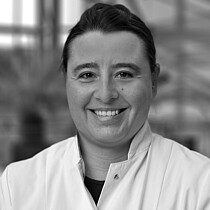
Project Title
Neurology & Oncology - Neurological Sequelae of Tumor (Therapy)
Project Description
Neurological sequelae are among the most common side effects of many tumor therapies. They can affect the peripheral nervous system resulting in a mono- or polyneuropathy (e.g. chemotherapy-induced polyneuropathy, radiation-induced neuropathy) or lead to diffuse changes in cognitive functions (e.g. post-chemotherapy cognitive impairment, radiation-induced leukenchalopathy). In
addition, immune-related adverse events (irAE) are becoming more common due to the increased use of tumor immunotherapies such as immune checkpoint inhibitors or cell-based therapies like CAR-T cell therapy. In general, the underlying pathomechanisms of neurological sequelae after tumor therapy are poorly understood and often no or insufficient treatment options exist. At the same time, they further reduce patients’ quality of life, lead to potentially long-term disability and frequently cause treatment limitations, which directly affect patients’ chance of survival. Our research group investigates the molecular mechanisms by which tumor therapies damage the peripheral and central nervous system. We use (personalized) induced pluripotent stem cell (iPSC)-based cell and organoid models as well as animal models. Preclinical findings are validated in clinical cohorts, in which we also investigate predictive and disease biomarkers. After identification of target candidates, we conduct interventional trials with a focus on prevention of tumor therapy-associated neurological sequelae (e.g. PREPARE study). Lastly, our group is involved in the design and evaluation of novel
infrastructures and interdisciplinary approaches to enhance patient care of cancer patients and cancer survivors.PD Dr. med. Paul Jahnke
Charité – Universitätsmedizin Berlin, Department of Radiology (including Pediatric Radiology)
Email: paul.jahnke@charite.de
Fields of Research
- 3D printing
- Computed tomography
- Image quality
- Standardization

Project Title
3D Printing of Tumor Models to Standardize Radiomics Biomarkers in Oncologic Patients
Project Description
Radiomics makes quantitative information available from computed tomography (CT) images that provides new diagnostic and prognostic insights into tumor diseases. Novel radiomics biomarkers have shown high potential for better, personalized tumor therapies in numerous studies. However, as the field progresses, the quality of CT data becomes increasingly important. Radiomics features are extracted from tumor pixel information, which currently varies widely across institutions, scanners and even within the same scanner. This situation represents a major limitation for the robustness and clinical application of radiomics. Imaging phantoms are reference objects of known ground truth and represent a standard instrument in testing, controlling and comparing imaging systems. However, standard CT phantoms test and standardize technical system parameters, but do not evaluate radiomics features. Based on a new technology specifically developed for 3D printing of radiopaque objects, our aim is to develop the first reference tumor phantom for radiomics. We will use the phantom to evaluate effects of imaging technologies on the robustness of radiomics features, and we will develop methods to improve the quality of CT data, establish standardization and enable more reliable radiomics analyses.
Dr. med. Verena Klämbt
Charité Universitätsmedizin Berlin, Department of Pediatric Gastroenterology, Nephrology and Metabolic Diseases
Email: verena.klaembt@charite.de
Fields of Research
- Monogenic kidney disease
- Genome editing
- Base editing
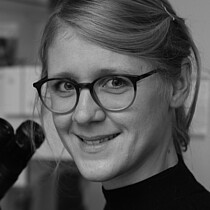
Project Title
Genome Editing as a Treatment for Monogenic Atypical Hemolytic Uremic Syndrome
Project Description
Atypical hemolytic uremic syndrome (aHUS) is a very rare, life-threatening thrombotic
icroangiopathy mainly caused by uncontrolled complement activation. It is associated with thrombocytopenia, acute kidney injury, and hemolytic anemia. Approximately 50-70 % of aHUS
patients have an underlying monogenic cause. Variants in the gene encoding complement factor H (CFH) are the most common cause of aHUS in 20-30 % of the cases and lead to an overall severe disease course, with high risk for relapses and rapid progression to end stage renal disease (ESRD). Once ESRD is reached, patients require either dialysis or transplantation, which represent an enormous health-care burden worldwide. Eculizumab and novel complement inhibitors such as Ravulizumab have entered clinical applications. It is highly effective for treating acute episodes and preventing relapses but still bears major side effects. In addition, it needs to be administered frequently as a life-long treatment. Thus, a »single-shot« »once-and-done« treatment via CRISPR-
based genome editing could be a promising novel treatment strategy for patients suffering from aHUS due to CFH variants. CRISPR base editing combines high efficacy and easy programmability without requiring double- strand breaks (DSB) or donor templates. Recent in-vivo applications underscore its potential. We will target different CFH variants by in in-vitro base editing in HEK293T reporter cells using different combinations of guide RNAs and base editors. Targeted amplicon
sequencing will assess base editing efficiency. The results will be validated in iPSC-derived hepatocytes after introducing the patient variant. Adeno associated virus (AAV) has successfully been used as a vehicle to express base editors in-vivo. Due to the large size of base editors, split inteins must be employed to distribute the payload of base editor and gRNA on two AAVs. Thus,
I will test different spliceinteins and splicing positions to generate a splitintein base editor that sufficiently edits the CFH variants. In the long run, we plan to apply base editing in-vivo to explore if pathogenic variant correction can prevent, halt or reverse disease progression. Overall, this project aims to use innovative CRISPR base editing tools that have been successfully applied to correct other genes, to now correct CFH variants causing aHUS.Dr. med. Martin Klatt
Charité – Universitätsmedizin Berlin, Department of Hematology, Oncology and Cancer Immunology
Email: martin.klatt@charite.de
Fields of Research
- Immunotherapy
- Immunopeptidomics
- TCR mimic CAR T cells

Project Title
Mass spectrometry driven identification of T cell immunotherapy targets in head and neck squamous cell carcinoma
Project Description
Even if treated with state-of-the-art care, patients diagnosed with metastatic head and neck squamous cell carcinoma (HNSCC) face a devastating 8 months median overall survival highlighting a profound unmet medical need for additional treatment strategies. Over the last years, immunotherapeutic approaches such as antibody-based immune checkpoint blockade have been implemented successfully in clinical care demonstrating responsiveness of HNSCC towards immunotherapy. This effect might be mediated by T cell recognition of the three different sources for highly tumor-specific immunotherapy targets expressed in HNSCC tumors: oncogenic viral antigens, cancer germline antigens and mutation-derived neoantigens.
We aim to identify these tumor-specific targets, which are presented on the cell surface as small peptides in the context of Human Leukocyte Antigen (HLA) complexes. Utilizing immunoprecipitation of these HLA complexes followed by ultrasensitive mass spectrometry of the presented peptides will enable us to determine their exact amino acid sequences. To increase the sensitivity and clinical relevance of this approach, we will first identify all potentially presented HLA ligands in an overexpression system of COS7 cells transfected with HLA complexes (HLA-A*01, -A*02 or -A*03) and antigens (viral, cancer germline or somatically mutated) of interest. Then, we will validate the presence of such bona fide HLA ligands in tumors generated from patient derived xenograft (PDX) models to ensure their biological relevance.
Such well-defined and validated HLA ligands will then form the basis for future studies in which we aim to identify reactive TCRs as wells as TCR mimic CAR T cells to develop and provide effective cellular immunotherapies for patients with HNSCC.Dr. med. Felix Kleefeld
Charité – Universitätsmedizin Berlin, Department of Neurology and Experimental Neurology
Email: felix.kleefeld@charite.de
Fields of Research
- myositis
- proteomics
- neuromuscular diseases

Project Title
Molecular Characterisation of Pathomechanisms in Acquired and Hereditary Myopathies
Project Description
Idiopathic inflammatory myopathies (IIMs) form a group of autoimmune diseases affecting the skeletal muscle and, to a variable extent, other organ systems (e.g. skin, lungs, heart muscle). While research has shown that the pathogenesis of IIMs is heterogeneous, this fact is not yet reflected by the current classification systems. As a consequence, in many cases the treatment of IIMs follows an »one fits all« approach that does not reflect the complex molecular differences of IIMs. Pilot studies have shown that some subtypes of IIM might even be misclassified in the current diagnostic classifications. In this project, we will perform state-of-the-art untargeted proteomics in a large cohort of patients with IIM to explore the molecular pathogenesis of the different diseases.
This data will then be used in the development of a modern, evidence-based classificition system (»Myositis 3.0«) that may hold important implications for future therapy strategies (e.g. targeted therapies) in the context of IIMs. A second focus of my research is the characterisation of mitochondrial dysfunction in the context of IIMs and hereditary myopathies. Mitochondria may show abnormalities caused by primary genetic defects (e.g., mtDNA mutations and deletions), inflammatiory processes (e.g., in Inclusion body myositis), and/or by post-tranlational/- transcripitional mechanisms (e.g. sequestration of transcription factors, e.g. in Myotonic dystrophy type 2). This interplay and the particular role of mitochondria in the pathophysiology of the individual diseases is only incompletely understood. Unraveling the role of mitochondria, however, may open new opportunities for targeted treatment approaches.Dr. med. Jan Klocke
Charité – Universitätsmedizin Berlin, Department of Nephrology and Medical Intensive Care Medicine
Email: jan.klocke@charite.de
Fields of Research
- Nephrology
- Single Cell Diagnostics
- Urinalysis

Project Title
Urine-Derived Regenerative Tubular Epithelial Cells (RegTEC): Biomarker and Therapeutic Target in Acute Kidney Injury
Project Description
Acute kidney injury (AKI) is a major health problem implying significant morbidity and mortality. The care for AKI patients is merely supportive and our understanding of the pathophysiology is limited. One key to improved treatment of kidney disease is new diagnostic methods that allow assessment of individual regeneration potential or risk of progress to chronic kidney disease after
AKI. Recently, dedifferentiated kidney tubular epithelial cells (TECs) have been revealed to be essential in injury and repair processes in AKI.
Usually, urine is devoid of cells. But after AKI, patient’s urine contains kidney TECs with regenerative potential (regTECs). These cells, so far only detected by single-cell RNA sequencing, have a molecular makeup which is sufficiently preserved in urine to infer data informative about expression patterns in a patient’s kidney without biopsies. My project specifically promotes the rapid translation of these findings to a clinically relevant application in three elementary steps:
1) The dynamics and prerequisites of the damage-associated
occurrence of regTECs in urine will be elicited in a temporally resolved manner with single-cell RNA
sequencing and validated separately in kidney tissue.
2) The regTEC detection in urine will be made scalable using simplified methodology (flow cytometry), thus enabling the examination of larger cohorts and clinical use of urinary regTECs as a cellular biomarker for AKI recovery.
3) Using cell sorting, regTECs will be isolated from urine and made accessible for the evaluation of their regenerative potential in vitro.Dr. med. Matteus Krappitz
Charité – Universitätsmedizin Berlin, Department of Nephrology and Medical Intensive Care
Email: matteus.krappitz@charite.de
Fields of Research
- Genetic kidney disease
- ADPKD
- ADPLD
Project Title
Inhibition of the Ire1α-XBP1 Pathway Using as a Novel Way to Delay Progression of ADPKD
Project Description
Autosomal-dominant polycystic kidney disease (ADPKD) is the most common hereditary renal disease, affecting 1:400 to 1:1,000 individuals. It accounts for over 90 % of all hereditary renal cystic diseases and is characterized by the presence of bilateral renal cysts. These cysts typically grow and expand slowly over decades, resulting in significantly increased total kidney volume, progressive renal injury and ultimately end stage renal disease (ESRD) around the sixth decade of life. The most common extrarenal manifestation of ADPKD is polycystic liver disease, which can also occur as an independent genetic entity, autosomal-dominant polycystic liver disease (ADPLD). Previously, it has been demonstrated that ADPLD and ADPKD share a common underlying molecular genetic mechanism centered on the activity of polycystin-1 (PC1) despite differential degree of kidney manifestations. PC1 is the protein product of the primary gene linked to ADPKD, Pkd1. ADPKD appears to be recessive at the cel-lular level. Therefore, somatic second hits in the normal PC1-allele of cells containing the germline mutation ini-tiate or accelerate the formation of cysts. It became evident that the Ire1α-XBP1 pathway, the most conserved branch of the endoplasmic reticulum (ER) unfolded protein response (UPR), plays a protective role in cyst for-mation induced by Sec63 deficiency, one of the genes causing ADPLD. This is accomplished by an optimization of the ER-folding environment of misfolded PC1 via upregulation of chaperone proteins dependent on XBP1. Our recent unpublished data has revealed that XBP1 is a direct genetic interactor of Pkd1 and may surprisingly promote the progression of ADPKD via inactivation of PC1. We hypothesize that upregulation of XBP1 protects Pkd1-deficient cyst cells from apoptosis, which in turn promotes cyst growth. Consequently, double inactivation of Pkd1/XBP1 leads to specific apoptosis of cyst lining epithelia without any impact on proliferation. Preliminary data strongly suggests that avenues modulating homeostatic Ire1α-XBP1 signaling in vivo may hold therapeutic potential. This protective effect is accomplished by selectively promoting the apoptosis of cells that have acquired sec-ond hits in Pkd1, and which are responsible for the development of cystic lesions that eventually lead to poly-cystic kidney and liver disease. Based on these studies the aim of this project is to investigate: a) the underlying mechanism of Ire1α-XBP1-double knockout dependent cyst-lining cell apoptosis and the impact of chemical modulation of the Ire1α-XBP1 pathway on cyst progression and b) the effect of XBP1 inactivation on the progression of polycystic liver disease due to Pkd1 or Pkhd1 deletion. We hypothesize that avenues that inhibit Ire1α-XBP1 hold therapeutic potential for a novel treatment of ADPKD.
PD Dr. med. Felix Krenzien
Charité – Universitätsmedizin Berlin, Department of Surgery
Email: felix.krenzien@charite.de
Fields of Research
- Surgical oncology
- Hepatobiliary surgery
- Liver cancer

Project Title
Improving Outcomes in Hepatobiliary Surgery
Project Description
Felix Krenzien is principle investigator and highly qualified surgical oncologist, currently working full time at Charité. He is actively engaged in both basic and clinical research, being funded by the Else-Kröner Fresenius Foundation and the Innovation Fund of the Federal Joint Committee. His primary focus is on liver cancer, specifically on the development of early detection methods and the identification of key factors for progression to fibrosis and cirrhosis, which are significant risk factors. In recognition of his exceptional accomplishments in this field, he was honored with the prestigious Ferdinand Sauerbruch Research Prize and was inducted into the esteemed Academy of Excellence of the German Society of General and Visceral Surgery by the full professors.
Dr. med. Jakob Kreye
Deutsches Herzzentrum der Charité Department of Pediatric Neurology
Email: jakob.kreye@dzne.de
Fields of Research
- Autoimmune Encephalitis
- Neuroimmunology
- Humoral Immune Responses

Project Title
Cross-Reactivity of Antiviral Antibodies Against Neuronal Autoantigens as Cause of Autoimmune Encephalitis
Project Description
Encephalitis is a rare but serious neurological condition in which inflammation of the brain frequently causes irreversible neurological dysfunction and death. Few years ago, it was shown that these disorders can be mediated by antineuronal autoantibodies, most com-monly by those that target the NMDA receptor. Some of the affected patients had previously undergone viral brain infections. However, it has so far remained unclear whether these infections might be causatively related to the autoantibody formation and the antineuronal autoimmunity.
This research project will investigate whether antineuronal autoimmunity can occur through specific cross-re-activity of antiviral antibodies or as an unspecific epiphenomenon. Cerebrospinal fluid and serum biosamples from anti-NMDA receptor encephalitis patients have been collected via the German autoimmune encephalitis net-work (GENERATE). They will be analyzed using VirScan, a recently developed bacteriophage display technology to derive reactivity profiles of antibody binding against all human-pathogenic viruses at the resolution of single viral peptides. These investigations will be performed in a rotation to the lab of VIrScan co-founder Benjamin Larman at the Johns Hopkins University School of Medicine. Afterwards, the binding epitope data will be used to isolate monoclonal antibodies against selected viral peptides from stored cells of autoimmune encephalitis patients with the history of viral encephalitis to further investigate antineuronal cross-binding on the level of monoclonal antibodies.Dr. med. Anna Kufner Ibarroule
Charité – Universitätsmedizin Berlin, Department of Neurology and Experimental Neurology
Email: anna.kufner@charite.de
Fields of Research
- Ischemic stroke
- Magnetic resonance imaging
- Computer tomography

Project Title
Prediction of Long-Term Outcome in Acute Ischemic Stroke Patients Using Lesion-Network Mapping
Project Description
Despite the development of successful acute treatments for ischemic stroke, stroke remains a leading cause of lasting disability and permanent functional dependance worldwide. Not only can an ischemic stroke lead to severe motor deficits impeding mobility, there is growing evidence that stroke can lead to more complex and long-term symptoms including chronic depression and pro-gressive cognitive decline; all of which have a substantial impact on the patients’ rehabilitation success and quality of life. Due to the frequency and complex course of these post-stroke symptoms, understanding the underlying mechanisms is essential to develop accurate prediction models to identify patients at risk to ultimately introduce targeted treatments. A relatively new methodology, called lesion network mapping (LNM) using the so-called human connectome offers a new and accessible way to evaluate anatomical as well as functional connectivity across lesions using magnetic resonance (MR) sequences acquired in routine clinical diagnostics. The consider-ation of lesion functional connectivity has the potential to substantially increase the accuracy of our out-come prediction models in the field of stroke and subsequently allow us to optimize individualized treatment options for stroke patients. Therefore, the current project will pool MR and clinical data of >1500 ischemic stroke patients from several independent large, well-characterized, prospective stroke cohorts to 1) identify the functional networks associated with early motor recovery, as well as the development of post-stroke depression and cognitive impairment – using LNM with the connectome. Furthermore, 2) we aim validate these findings using predictive modelling in a large independent cohort of stroke patients with long-term follow-up. Our main hypothesis is that with a systematic approach using large datasets (including clinical & paraclinical data), we can apply LNM to predict post-stroke outcome, including motor recovery, functional dependence, as well as post-stroke depression and cognitive decline.
Dr. med. Cornelia Lachmann (geb. Knaak)
Charité – Universitätsmedizin Berlin, Department of Anesthesiology and Intensive Care Medicine
Email: cornelia.lachmann@charite.de
Fields of Research
- Telemedicine
- Immunology
- Rare Diseases
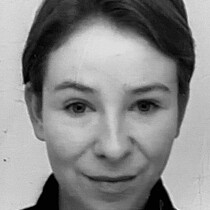
Project Title
Telemedicine for Quality Improvement in diagnosis and therapy of Hemophagocytic Lymphohistiocytosis
Project Description
Hemophagocytic Lymphohistiocytosis (HLH) is a rare though life-threatening hyperinflammatory syndrome in which uncontrolled immune activation leads to excessive cytokine release - the so-called cytokine storm. Due to its clinical overlap with sepsis, HLH remains frequently undetected. Mortality rates are high, particularly among critically ill patients (58 %). In a previous systematic review, we could demonstrate that a multitude of therapeutic strategies are applied in HLH patients while current recommendations remain inadequately implemented. Here, telemedicine offers a unique opportunity for research while at the same time improving diagnosis and therapy of HLH. Within this project, we will establish a reference center for national and international consultation requests. In that we concentrate digitally all HLH cases in one center, we will generate a sufficient number of cases to perform robust data analysis. Diagnosis and therapy recommendations are based on current guidelines. For therapy evaluation, daily telemedical visits are carried out from the day of the first consultation. Serious and refractory cases are assessed interdisciplinary by a Charité expert panel.
Moreover, there is an unmet need of targeted therapies. One reason lies in the poorly investigated pathophysiology of HLH. Therefore, we will establish and expand a biobank of cytokine profiles to enable safe diagnosis and causal treatment.
Collecting data of a rare disease prospectively will allow us to create a machine learning algorithm which will ultimately support deep disease characterization. The database will be used to develop an app for physicians as a diagnostic and treatment tool. Simultaneously, data will be transmitted via the app for scientific evaluation.
Our aim is to reduce in hospital mortality through rigorous adherence to current guidelines. Moreover, we will assess treatment efficacy and develop an HLH severity score to improve classification of HLH patients. This project is the first international study in HLH patients using telemedicine.Dr. med. Alena Laschtowitz
Charité – Universitätsmedizin Berlin, Department of Hepatology and Gastroenterology
Email: alena.laschtowitz@charite.de
Fields of Research
- Hepatology
- Immunology
- Bioinformatics
- Next Generation Sequencing

Project Title
Deciphering the inflammatory microenvironment in fatty liver disease on a single cell level by snRNAseq analysis
Project Description
Non-alcoholic fatty liver disease (NAFLD) is a chronic inflammatory liver disease that represents the leading cause of chronic liver diseases worldwide. Without intervention, NAFL may progress to its inflammatory form, non-alcoholic steatohepatitis (NASH), with an increased risk of cirrhosis and hepatocellular carcinoma development. While numerous novel pharmacotherapeuticals have been tested in clinical trials, most have failed to deliver the desired outcomes of steatohepatitis resolution or reversal of fibrosis. The early identification of patients at risk for disease progression is an unmet need while disease-specific mechanisms that drive chronic inflammation in NASH are still enigmatic.
Single cell RNA-seq techniques are indispensable for an unbiased approach for the study of gene expression but are challenging in the liver due to its complex cell composition. In our collaborative project we will apply the innovative method of single nuclei RNA-sequencing to decipher the inflammatory microenvironment on a single cell level in routinely performed liver biopsies of patients developing NASH, to identify possible new treatment targets. By identification of novel non-invasive biomarkers and implementation of machine learning techniques we strive to develop diagnostic and prognostic tools to identify patients at risk for disease progression.Dr. med. Michael Launspach
Charité – Universitätsmedizin Berlin, Department of Pediatric Oncology and Hematology
Email: michael.launspach@charite.de
Fields of Research
- Pediatric oncology
- CRISPR based Gene therapy
- Solid tumor microenvironment

Project Title
Personalized CRISPR/Cas9 Gene Therapy to Alter the Tumor Microenvironment and Enhance CAR T Cell Therapy in Solid Tumors
Project Description
Therapy-resistant solid tumors represent a growing global challenge. Neuroblastomas are examples of solid tumors, and as the most common extracranial solid tumor of childhood, they are responsible for 15 % of childhood cancer-related deaths. The overall survival for high-risk cases still does not exceed 50 %, and treatment options are limited in cases of relapse. One novel approach could be adoptive T cell therapy with chimeric antigen receptor (CAR) T cells. It uses T cells engineered with specific anti-gen recognition motifs fused to costimulatory and signaling domains to generate a tumor-specific immune response. While this novel form of therapy is successfully used to treat CD19+ B-cell malignancies, response rates in the treatment of solid tumors are not yet sufficient due to a series of hurdles, especially insufficient T cell infiltration and an immunosuppressive tumor microenvironment. To overcome this hurdle, we are developing personalized gene therapy to patient-specifically modify neuroblastoma cells in vivo to express transgenes encoding T cell-attracting and stimulating chemokines and cytokines. Their expression can favorably alter the tumor microenvironment to enhance both CAR T cell activation and tumor infiltration. The approach is demonstrated in neuroblastoma but is extendable to further solid tumor entities. To achieve the necessary safety and efficiency for in vivo gene therapy, we aim to combine two targeted mechanisms. On the one hand, tumor-specific mutations identified via an established multi-step analysis of genomic and transcriptomic data are targeted using CRISPR/Cas9 technology to achieve tumor cell specificity. On the other hand, we are developing a targeted lipid nanoparticle based delivery system (tLNP), where gene therapy carrying lipid nanoparticles are modified with neuroblastomaspecific antibodies to preferentially direct the gene therapy to the tumor cells. Gene delivery, gene therapeutic effect, CAR T cell efficacy, safety, and toxicity will be evaluated after targeted gene transfer alone or in combination with CAR T cell therapy in humanized patient-derived (hPDX) mouse models. Our approach is unique in that it aims to engineer the patient’s tumor cells to alter the tumor microenvironment to enable T cells to reach the tumor cells within.
Dr. med. Roxanne Lofredi
Charité – Universitätsmedizin Berlin, Department of Neurology with Experimental Neurology
Email: roxanne.lofredi@charite.de
Fields of Research
- Movement disorders
- Deep brain stimulation
- Intracerebral recordings

Project Title
Neurophysiological Network Signature of Delayed DBSeffects in Dystonia
Project Description
Dystonia is a movement disorder that is characterized by abnormal movements and postures. Pallidal deep brain stimulation (DBS) has proven an effective treatment option for dystonia. To achieve optimal DBS effects, a variety of stimulation parameters must be individually tested. In dystonia, this approach is specifically challenging as many DBS-effects occur with a delay of days to months and symptom severity may vary over time, which favors recall bias of patients when asked to evaluate DBS-settings. Two approaches could help to improve adjustments of DBS-therapy in dystonia: 1) The use of computer-based video processing, so-called »computer vision«, to enable objective symptom evaluation outside the clinical setting and 2) the identification of real-time electrophysiological markers of symptom severity as recorded from DBS-electrodes by sensing-enabled DBS-devices that could be used to adjust DBS-parameters in a closed-loop system. Examples are pallidal low frequency activity (3-12 Hz) and reduced alpha coupling (10-12 Hz) between the pallidum and cerebellum, which have emerged as neurophysiological correlates of dys-tonic symptoms. So far, the investigation of corticosubcortical activity patterns was temporally limited to a short peri operative time window in which DBS-electrodes were externalized and could thus not incorporate delayed DBS-effects. Chronic recordings are needed to validate the reliability of known neurophysiological markers and identify markers of delayed DBS-effects. In this project, we will try to advance both the objective assessment of motor symptoms via computer vision as well the characterization of pathophysiological correlates in chronic DBS-recordings. In project 1, I will extract movement traces from the large archival video database of dystonia patients of the movement disorders unit by using computer vision and test their symptom-specific predictive value. In project 2, I will perform chronic recordings via pallidal DBS electrodes to identify symptom-specific oscillatory correlates of symptom severity objectively assessed by networks trained in project 1. In project 3, I will compare corticosubcortical network activity as recorded by whole-head magnetencephalography before and after chronic DBS to explore DBS-associated plasticity within the network profile as a marker of DBS-effects. Taken together, these findings will help to improve symptom-assessment and guide treatment optimization for patients with dystonia.
Dr. med. Tina Mainka-Frey
Charité – Universitätsmedizin Berlin, Department of Neurology and Experimental Neurology
Email: tina.mainka@charite.de
Fields of Research
- Movement Disorders
- Pain

Project Title
Study of the Pathophysiology of Pain in Dystonia by Neurophysiological and Imaging Methods
Project Description
Pain is the most frequent non-motor symptom in cervical dystonia in up to 75 % of patients. It might occur as the first symptom of the disease and oftentimes becomes chronic. For many patients, pain is more disabling than the sustained or intermittent muscle contractions causing abnormal movement and/ or postures which is the main motor manifestation of dystonia. Despite its severe impact on the patients’ quality of life and the significant socioeconomic implications, the phenotype and the pathophysiology of pain in dystonia are mostly unknown. There is no correlation between motor symptoms and pain, and non-dystonic muscles might also be painful. Therapeutic interventions that might relief pain (e.g., injections of botulinum toxin, deep brain stimulation) do not always improve motor symptoms and vice versa. We can therefore assume, that pain in dystonia is not solely generated by dystonic muscles. Recently, it has been proposed that an insufficient descending pain inhibitory system, assessed by conditioned pain modulation, might contribute to pain in dystonic patients. With this project, we aim to phenotype the pain syndrome in large cohorts of patients with various forms of focal and generalized dystonia without and during therapy by means of questionnaires, neurophysiological markers, particularly conditioned pain modulation, and imaging methods. The results will lead to a better understanding of the pathophysiological mechanisms of pain in dystonic syndromes and create a foundation for individualized, mechanism-based therapies.
Dr. med. Isabel Mattig
Charité – Universitätsmedizin Berlin, German Heart Center Berlin at Charité Department of Cardiology, Angiology and Intensive Care Medicine
Email: isabel.mattig@dhzc-charite.de
Fields of Research
- Valvular heart disease
- Interventional therapy
- Echocardiography

Project Title
New Advances in Tricuspid Regurgitation
Project Description
Tricuspid regurgitation (TR) is one of the most common structural heart diseases and is associated with high morbidity and mortality (Singh et al., Am J Cardiol, 1999; Nath et al., JACC, 2004). In recent years, various interventional therapies for TR, such as percutaneous annuloplasty and transcatheter edge-to-edge repair, have been developed (Praz et al., EuroIntervention, 2021). Particularly, older multimorbid patients who were previously managed symptomatically may benefit from minimally invasive therapies. The accurate quantification of TR using echocardiography is a prerequisite for deter-mining the treatment indication. However, previous echo cardiographic measurements of the regurgitation orifice area (EROA) and volume (RegVol) based on the »PISA« method are prone to errors due to the tricuspid valve anatomy and underestimate the TR severity by approximately 50 %. An angle-corrected formula for calculating EROA may address this diagnostic gap (Tomaselli et al., Eur Heart J Cardiovasc Imaging, 2022).
In the current project, titled »New advances in tricuspid regurgitation«, we aim to evaluate (i) the prevalence and prognosis of TR in different heart failure phenotypes, (ii) the outcome of patients after different types of interventional TR therapy, and (iii) the prognostic value of angle-corrected quantification of TR.
To accomplish this, we prospectively enrolled 1000 patients with heart failure who underwent echocardiographic examination to quantify TR. Follow-up telephone visits are conducted at three, six, twelve, and twenty-four months. Additionally, patients who undergo interventional TR therapy are enrolled in the »Berlin Registry of Right Heart Interventions«. Follow-up examinations, including echocardiography, electrocardiograms (ECG), laboratory measurements, and symptom assessments, are performed at two, twelve, and twenty-four months. Offline echocardiographic analysis enables further TR assessment using the angle-corrected formula for calculating EROA, allowing evaluation of the prognostic value of the corrected TR grading in both cohorts.
The overall objective of this project is to enhance the diagnosis and treatment of TR patients.Ellen Meister
Charité-Universitätsmedizin Berlin, Klinik für Radioonkologie und Strahlentherapie (CVK)
Email: ellen.meister@yale.edu
Fields of Research
- Radiology
- Oncology

Project Title
Targeted Immunotherapy in Combination with pH Modulation in a VX2 Rabbit Liver Tumor Model
Project Description
Hepatocellular carcinoma (HCC) represents the most common liver cancer and the second leading cause of cancer-related mortality worldwide. In recent years, systemic immunotherapy has emerged as a promising treatment option for HCC, particularly in advanced stages of the disease.
To maximize the potential of immunotherapy treatment, new methods concerning its application need to be developed. Combining immunotherapeutic agents with locoregional techniques of drug delivery and embolization is hypothesized to significantly enhance treatment success.
This project aims to establish a novel intra-arterial delivery method for immunotherapy in HCC. Locoregional delivery is presumed to improve diffusion of the antibodies within the tumor and its microenvironment, therefore increasing target binding. Localized application of the treatment is expected to minimize off-target inflammation, representing a common side effect of systemic immunotherapy. To increase the expected anti-tumor effect of immunotherapy even further, this study intends to combine checkpoint inhibition with bicarbonate treatment, which has recently been proven successful in elevating the pH in the tumor and its microenvironment, therefore counteracting the immunosuppression caused by the increased output of lactate by the tumor. A combined treatment approach including bicarbonate as well as immunotherapy is expected to enable the most substantial antitumor inflammatory reaction, correlating with a maximized treatment success.
To verify this hypothesis, this study investigates the effect of locoregional immunotherapy in HCC by assigning 12 VX2 liver tumor-bearing rabbits to four treatment arms. These include sham treatment, bicarbonate treatment, immunotherapy, and the combination of both bicarbonate and immunotherapy. All treatments are infused directly into the tumor-feeding artery, followed by a transarterial embolization to prevent washout. The immune cell infiltration into the tumor and its microenvironment is evaluated after seven days using immunohistochemical staining, immunofluorescence, and flow cytometry.Dr. med. Jochen Michely
Charité – Universitätsmedizin Berlin, Department of Psychiatry and Neurosciences
Email: jochen.michely@charite.de
Fields of Research
- Computational Psychiatry
- Cognitive Neuroscience
- Psychopharmacology

Project Title
The Neurocognitive Mechanisms of Serotonergic Antidepressants
Project Description
Pharmacotherapy of depression targets monoaminergic neurotransmission, with selective serotonin reuptake inhibitors (SSRIs) constituting first-line antidepressant intervention. Serotonergic antidepressants work well for many patients, however, it typically takes multiple weeks before they experience clinical benefit. Clinically, this delayed onset of action is problematic, as it prolongs patients’ suffering and complicates therapeutic decision-making. Scientifically, it is puzzling, as SSRIs boost brain serotonin levels within hours of treatment initiation. To date, it remains unknown why neurochemical and therapeutic effects operate on different timescales, with SSRIs impacting neurocognitive function within hours, and clinical benefits only emerging after several weeks. Further, psychiatrists lack early markers that predict who may show a delayed clinical response to antidepressant intervention. Arguably, this arises from a paucity of knowledge about how antidepressants work, as, even 60 years after their serendipitous discovery, the exact neurocognitive mechanisms of their action remain elusive. Thus, the aim of my research is to refine depression treatment by providing a neuroscientifically grounded, mechanistic understanding of antidepressant drug action. In my prior work, I used a combination of cognitive experiments, computational modelling, and pharmacological neuromodulation to assess how SSRIs impact reward processing, learning, and decision-making in healthy individuals. Further, I developed a neurocom-putational framework of how these neurocognitive changes can lead to gradual mood improvement over time. In this BIH Clinician Scientist fellowship, I aim to probe this mechanistic account of antidepressant drug action in a bench-to-bedside translational approach in depressed patients initiating antidepressant treatment. Here, the goal of my fellowship is two-fold: First, I will determine how a serotonergic impact on neurocognitive processes in patients gives rise to mood improvement and a delayed clinical onset of SSRI therapy. Second, I will identify early neurocognitive markers, occurring within hours or days, that may serve to predict who will show a delayed clinical response after weeks of serotonergic intervention.
Dr. med. Mirja Mittermaier
Charité – Universitätsmedizin Berlin, Department of Infectious Diseases and Respiratory Medicine
Email: mirja.mittermaier@charite.de
Fields of Research
- Deep Learning
- Viral Pathogenesis
- Explainable Deep Learning
- Human Lung Tissue
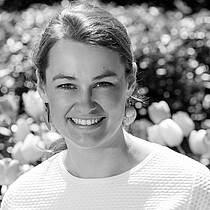
Project Title
Explainable Deep Learning to Investigate Viral Pathogenesis in the Human Lung
Project Description
Understanding viral pathogenesis is a key fi eld of investigation in emerging respiratory viruses. It is crucial to gain a deep understanding of the molecular and cellular interplay between viruses and their host to enable innovative adjunctive therapies beyond pathogen-directed clinical approaches. To understand the pathogenesis of a viral infection, it is pivotal to identify the i.) cell tropism (which cells are infected by the virus), along with ii.) other cell types present in the lung tissue and involved in the immune response. Over the past decade, the fi eld of systems virology has evolved and technologies such as microarrays and single cell sequencing provide detailed information e.g. about gene expression signatures. Although those methods provide insights into global responses, they lack the ability to provide spatial context. The other way round, imaging techniques, such as immunohistochemistry, are giving spatial context by detecting cell types and viruses in infected tissue but are limited by the number of labels per sample. In recent years, advanced microscopy imaging techniques signifi cantly improved our understanding of viral pathogenesis. In parallel, deep learning models in image classifi cation showed ground-breaking success on general images and have successfully contributed to solve classifi cation tasks in medical imaging. However, neural networks act like a black box and do not provide any information about what led to the classifi cation decisions. Yet, understanding the algorithms decisions would help to gain profund information and to ensure reproducibility. Although both technologies show major contributions independently, they have not yet been combined to investigate virus pathogenesis. Thus, we aim to develop deep learning algorithms and apply explainable deep learning to analyze »omics-data« along with spatially resolved high-resolution microscopy images to enhance our understanding of viral pathogenesis in the human lung.
Dr. med. Lina Mosch
Charité – Universitätsmedizin Berlin, Department of Anesthesiology and Intensive Care Medicine | Institute of Medical Informatics
Email: lina.mosch@charite.de
Fields of Research
- Vital Parameter Monitoring
- Perioperative Care
- Time Series Forecasting

Project Title
Prediction of vital signs in perioperative patient on normal wards
Project Description
Background: Perioperative complications are a global problem: 4.2 million people die annually after surgical procedures, with 73% of deaths occurring in normal wards. Here, complications are often detected too late because vital signs are inadequately collected and monitored. Predicting vital sign trends could detect complications earlier and increase patient:ing safety, while relieving staff from information processing and alarm management tasks.
Objective: The objective is to develop and validate a machine learning vital sign prediction model. Research hypothesis: A prediction model can accurately predict the development of four vital signs (SpO2, pulse, respiratory rate, temperature) for three time windows (30min, 1h, 3h) in perioperative patients in a normal ward. In addition, I aim to explore perceptions of patients and healthcare staff regarding (such) AI systems in order to derive recommendations for implementation.
Study Design and Methods
This mixed-methods study includes a retrospective model-generating and a qualitative part. Pseudonymized data of adult patients in surgical normal wards with a continuous vital sign monitoring system (frequency 1/min) are included over the period of one year. The data set (monitoring data, demographic data, medication, laboratory values and diagnoses) will be extracted from the HDP as well as the source system (monitoring system). A machine learning model (e.g., LSTM, GRUs) will be trained, validated, and tested on the dataset. For the qualitative study, an interview guide will be developed in expert:in focus groups. The semi-structured interviews will be recorded, transcribed and analyzed using qualitative content analysis.Dr. med. Agata Mossakowski
Charité – Universitätsmedizin Berlin, Department of Neurology and Experimental Neurology
Email: agata-anna.mossakowski@charite.de
Fields of Research
- Neuromuscular disease
- Muscular dystrophy
- Protein aggregation

Project Title
Therapeutic Strategies in Myofibrillar Myopathies – a Model for Protein Aggregation Diseases?
Project Description
Myofibrillar myopathies are a clinically and genetically heterogeneous group of neuromuscular diseases often leading to progressive skeletal myopathy and cardiomyopathy. The exact molecular pathogenesis of myofibrillar myopathy remains to be fully understood, though most mutations generate myofibrillar structural changes with abnormal intracellular aggregates of the intermediate filament desmin and other proteins.
These protein aggregates have been likened to aggregates and amyloids found in Alzheimer and Parkinson diseases, systemic amyloidosis, amyotrophic lateral sclerosis (ALS), Huntington disease and type II diabetes, but also share properties with prions, as found in Creutzfeldt-Jakob disease. Protein misfolding and the amyloid phenomenon are increasingly being recognized as a major disease driving mechanism, yet no therapies exist to date to cure the associated diseases.
I created and characterized a CRISPR-Cas9 engineered rat with an exchange of arginine to proline at position 349 (R349P) of the desmin gene; orthologous to the most prevalent desmin mutation in humans. This is the first rat model of myofibrillar myopathy. The rats exhibit both skeletal and cardiac myopathies with sarcoplasmic aggregates and signs of injury and remodeling, as well as ventricular arrythmias, a disorganization of the cardiac tissue architecture and fibrosis.
This Clinician Scientist project explores several thera-peutic approaches targeted against protein aggregation in a rat model of desminopathy, the most common myofibrillar myopathy, to improve muscle function.Dr. med. Jawed Nawabi
Charité – Universitätsmedizin Berlin, Department of Radiology (including Pediatric Radiology)
Email: jawed.nawabi@charite.de
Fields of Research
- Stroke Imaging
- Computed Tomography
- Quantitative Imaging
- Outcome Prediction

Project Title
Radiomics Based Machine Learning Prediction of Clinical Outcome on Intracerebral Hemorrhage
Project Description
Intracerebral hemorrhage (ICH) is the most severe form of stroke and remains a major cause of morbidity and mortality worldwide. Early detection of high-risk patients remains a key goal in directing the management and treatment course. Cerebral injury secondary to ICH is a known factor to potentiate the risk of a poor outcome. Rapid advances in our understanding of the underlying mechanisms have fueled an interest in identifying novel therapies targeting secondary injury. However, standardized biomarkers for imaging quantification could so far not be established. Emerging data suggest perihematomal edema (PHE) as a promising biomarker as the temporal course of PHE correlates with the manifestation of secondary injury but results remain inconsistent. Edema formation comprises multiple coordinated and complex mechanisms that are known to be disease-specific. In line with this, the applicant’s previously published work highlights the promising prognostic value of early edema formation in different forms of ICH. The assumption therefore seems reasonable that perihematomal edema holds additional imaging characteristics that are not visible to the human eye, yet of great prognostic value. Progressive machine learning (ML) algorithms have paved the way for a fully automated radiomics analysis and therefore hold a clear clinical impact. The application of ML algorithms for the prediction of clinical outcome after ICH are still lacking and have not included PHE features. The applicant’s previous results demonstrate that radiomic features provide a high discriminatory power in predicting neoplastic ICH on CT, with significantly higher power than human prediction. Quantitative features of PHE in ICH may distill multiple-but-subtle variations such as in thrombin accumulation, influx of inflammatory mediators, and erythrocyte lysis with significant prognostic value. Following this idea, the clinical research project aims at understanding the high-end quantitative imaging characteristics of perihematomal edema (PHE) which may serve as a predictor of poor prognosis and examine the efficacy in predicting patient outcomes after ICH.
Dr. med. Matthias Obenaus
Charité – Universitätsmedizin Berlin, Department of Hematology, Oncology and Cancer Immunology
Email: matthias.obenaus@charite.de
Fields of Research
- T cell engineering
- Cancer immunology
- Protein engineering

Project Title
Mechanisms of Cross-Presentation Assisted Tumor Rejection During T Cell Therapy
Project Description
T cells are specialized effector cells of the immune system capable of eliminating virus infected and cancer cells. The T cell antigen receptor stands unique among cell surface receptors being able to recognize down to a single specific antigen per target cell and at the same time specific enough to distinguish even a single amino acid substitution. Importantly, TCR recognition of a target does not just lead to a binary (activated / not activated) state of the T cell but can additionally encode information about the quality of the antigen allowing for different functional outcomes, e.g., proliferation vs. exhaustion. T cell targeting of tumors can be achieved with bispecific antibodies, or genetic modification of T cells with new TCRs or chimeric antigen receptors (CARs). Bispecific antibodies and CARs are successfully used to treat hematologic malignancies but show inadequate results in solid tumors. This is mainly due to a paucity of specific and effective antigen receptors. Even as more solid tumor specific TCRs become available prioritizing individual receptors for clinical development is challenging, because there are no known in vitro parameters that can accurately predict a receptor’s performance in vivo.
We are developing tools to better understand how individual antigen-receptor interactions drive specific T cell signaling pathways and phenotypes. In addition, we use protein engineering to fine-tune the receptor-antigen interface in order to better skew signaling towards clinically beneficial outcomes.Dr. med. Burcin Özdirik
Charité – Universitätsmedizin Berlin, Department of Hepatology and Gastroenterology
Email: burcin.oezdirik@charite.de
Fields of Research
- gastrointestinal oncology
- neuroendocrine tumors
- autoimmune liver diseases

Project Title
Multiomics and functional characterization of the mutational landscape in small intestinal neuroendocrine tumors
Project Description
The intestinal epithelium is characterized by rapid self-renewal, driven by crypt-base stem cells that express the R-spondin receptor Lgr5. Stem cell turnover and differentiation into various intestinal cell types have been recapitulated using organoids and, recently, also growth factor conditions to culture hormone-producing enteroendocrine cells (EECs) have been revealed. Characterized by a high level of complexity, EECs can dedifferentiate and form intestinal neuroendocrine neoplasms (NENs), a set of rare but lethal tumors with a concerning increase in incidence. Small intestine neuroendocrine tumors (siNETs) in most cases already present with metastases at the time of initial diagnosis. Their grading is mainly based on the Ki-67 proliferation index, which determines therapeutic procedure and ultimately patient survival. At present, the development of more effective therapies and prognostic markers has been limited partly by a lack of studies aiming to understand the biology of these rare tumors. In addition to small patient numbers, the absence of in vitro and in vivo models that accurately represent these tumors constitute a limitation in this field. To gain a deeper understanding of siNET biology, our group has launched a multiomics project, in which whole genome sequencing (WGS) and transcriptome analysis has been performed. Our preliminary data hint towards an important role of specific mutations. By using organoid culture system technologies, this study aims to understand the functional impact of specific mutations in siNETs and to explore their role for EEC survival, proliferation and dissemination.
Dr. med. Moritz Peiseler
Charité – Universitätsmedizin Berlin, Department of Hepatology and Gastroenterology
Email: moritz.peiseler@charite.de
Fields of Research
- Immunology
- Hepatology
- Intravital microscopy

Project Title
Dynamic Characterization of Resident Kupffer Cells in Liver Disease
Project Description
The liver is an important immune organ and provides the critical filter to prevent dissemination of blood-borne pathogens. The filter function is mediated by specialized liver macrophages, Kupffer cells, that are embryonically derived tissue resident macrophages. Kupffer cells have a unique intravascular location and an arsenal of specialized receptors to capture pathogens under fl ow conditions. Furthermore, as intrahepatic sentinels, Kupffer cells initiate or suppress immunity in the liver via crosstalk with many other resident and infiltrating immune cells. Liver inflammation leads to a sustained influx of monocyte-derived macrophages that augment the pool of liver macrophages. These bone marrow-derived cells infiltrate as pro-inflammatory cells fueling liver inflammation or as cells with a repair phenotype. To date, the functional consequence of this macrophage heterogeneity and the fate of different macrophage subsets in chronic liver disease is enigmatic. Since patients with chronic liver diseases are hallmarked with immune dysregulation,
inefficient pathogen clearance on the one hand and exaggerated immune responses on the other
hand, understanding the contribution of different macrophage subsets in the liver is of critical importance. Using a combination of novel linage-tracing tools with state-of-the-art intravital microscopy, we plan to investigate the fate and function of different macrophage subsets in liver disease models. Genetic fate mapping will allow us to differentiate bona fi de Kupffer cells from monocyte-derived macrophages. By using multicolor intravital microscopy, we can investigate the function of these subsets with regards to their critical function: capturing of blood-borne pathogens and initiating / suppressing immune responses in the liver via crosstalk with other cells. These investigations will be complemented by using 25-color spectral flow cytometry to further phenotype the different macrophage populations identified. In addition, as a translational approach, we will investigate liver biopsies of patients with various chronic liver diseases. We will isolate and phenotype liver macrophages with multicolor flow cytometry and correlate the findings with clinical characteristics to better understand macrophage biology in humans. Ultimately, by gaining a better understanding of the functional consequences of liver macrophage heterogeneity, we hope to identify novel pathways that can the targeted therapeutically in patients.Prof. Dr. med. Tobias Penzkofer
Email: tobias.penzkofer@charite.de
Fields of Research
- Quantitative Imaging Biomarkers for Oncology
- Explainable AI
- Research Networks

Project Title
Quantitative Imaging / Prostate Imaging, Abdominal / Urogenital Radiology
Project Description
The scientific focus of my laboratory (Quantitative Imaging Lab, www.qilab.org) is on the development, validation and implementation of quantitative imaging biomarkers, validation of structured reporting tools and explanatory machine learning based applications for oncology imaging. In these areas, external funding has been successfully obtained and the results obtained have been published in high-impact publications.
Understanding the value of image-based diagnostic tools such as structured diagnostic criteria or automated quantitative analyses including Al-based biomarkers is a complex and challenging task. Not only the technology used, but also high-quality data sets - accurately representing the population under study - are critical and seminal components for exploring the diagnostic and prognostic value of radiologic imaging. Because data quality management is of central importance, a key element of this work is the development of highly specific tools for organizing and annotating the data used. We have incorporated two principles into our Kl-driven biomarker development: (a) rigorous end-to-end validation of findings against radiologist performance and (b) application of explainable artificial intelligence to identify and correct biased models for decision making.
Projects planned for the next few years specifically address the implementation of the results obtained to date: (a) work on PI-RADS classification (analysis of PI-RADS classifications, evaluation of new PIRADS versions), which will be incorporated into the classification via broad evaluation (participation in multicenter studies, contribution to ESUR/ACR Prostate Working Group) (b) prototypical implementation and paraclinical validation of the Explainable AI model we developed for prostate MRI diagnostics, focus on end-to-end validation with analysis of the clinical value of the method by translating the models for image-based biomarkers.
Further development, expansion and participation in national and international network projects in the field of imaging research is another stated goal. In doing so, we will build on our previous experience, especially in setting up the Germany-wide RACOON network for COVID-19 research, but also the oncological imaging initiatives at national (National Center for Tumor Diseases, NCT, German Network for Personalized Medicine, DNPM) and international level (CHAIMELEON, EUCAIM).Dr. med. Caroline Anna Peuker
Charité – Universitätsmedizin Berlin, Department of Hematology, Oncology and Cancer Immunotherapy
Email: caroline-anna.peuker@charite.de
Fields of Research
- Uveal melanoma
- Cancer immunotherapy
- Cancer immunomodulation

Project Title
Identification of Targets and Biomarkers for Innovative Uveal Melanoma Immunotherapy
Project Description
Uveal melanoma (UM) is an aggressive intraocular tumor that in terms of biology and clinical behavior is markedly distinct from its cutaneous counterparts. Despite highly effective eye-preserving radiation therapies such as proton beam therapy (PBT), systemic dissemination occurs in ~50 % of patients through early micrometastases. There is no established (neo)adjuvant therapy to prevent metastatic spread. Although recent immunotherapeutic advancements have been made, prognosis of metastatic UM remains dismal due to a lack of effective therapies for the majority of patients. Various factors have been identified that lead to low immunogenicity and the development of an immunosuppressive tumor microenvironment, however there is a high need for a better understanding of the complex immune-evading mechanisms as a prerequisite for novel therapeutic strategies in UM. Together with the Helmholtz-Zentrum Berlin, the Charité is one of the largest PBT centers worldwide. In this project we will characterize the cellular ecosystem in UM and investigate the immune modulating effects of PBT on the tumor microenvironment and decipher mechanisms of disease progression and immune escape. For this, we will perform single-cell multiomic mapping of the UM tumor immune contexture using highdimensional spectral flow cytometry complemented by singlecell transcriptomic and proteomic characterization and spatial profiling in a comparative approach of PBT-pretreated UM tumors (with secondary surgical resection) and treatment-naive UM tumors (obtained through primary enucleation). With this research, we aim to identify immunomodulatory targets and correspond-ing predictive biomarker candidates for therapeutical interventions in the neoadjuvant/adjuvant setting to develop novel therapeutic strategies to reduce the risk of metastases.
Dr. med. Lennart Pfannkuch
Charité – Universitätsmedizin Berlin, Speciality Network: Infectious Diseases and Respiratory Medicine
Email: lennart.pfannkuch@charite.de
Fields of Research
- Innate Immunity
- Pneumonia
- Signal transduction

Project Title
The sweetness of infection - the role of a bacterial sugar and a novel pattern recognition receptor in pulmonary inflamm
Project Description
The first line of defence that recognizes a potential pathogen and initiates an inflammatory response is the innate immune system. It depends on a network of specific immune receptors, termed pattern recognition receptors (PRR), that detect bacterial pathogen associated molecular patterns (PAMPs) and initiate a stereotyped immune response. Recently this cellular pathogen recognition apparatus was extended by the discovery of a novel PAMP in Gram-negative bacteria, ADP-heptose (ADP-hep) and its corresponding PRR, Alpha kinase 1 (ALPK1). ADP-hep is a soluble intermediate metabolite in synthesis of the conserved core oligosaccharide of Lipopolysaccharide (LPS) which is an integral component of the outer membrane of Gram-negative bacteria. Binding of ADP-hep to ALPK1 leads to activation of the central immune regulatory transcription factor NF-kB. Involvement of this pathway in initiation of inflammatory responses in vitro could be demonstrated for infections in a growing number of Gram-negative bacteria.
The lung is particularly dependent on a tightly regulated innate immune response that effectively clears an infection and simultaneously conserves organ function. Infections of the respiratory track and especially pneumonia still pose a major medical challenge and are associated with high mortality rates. Especially in hospitalized patients and immunocompromised individuals, infections are frequently caused by Gram-negative bacteria and here antibiotic resistance is becoming more prevalent. So, there is an urgent need to develop novel strategies to improve treatment of infections and to prevent detrimental, de-regulated hyperinflammation. Here, modulation of innate immune responses has been identified as a promising target.
Our aim is to understand the (patho-)physiological function of ADP-hep and ALPK1 in inflammatory responses and development of pneumonia in vivo. This will be tested using a lung infection model with the clinically highly relevant pathogen Pseudomonas aeruginosa.Dr. med. Dr. med. univ. Dominique Piber
Charité – Universitätsmedizin Berlin, Department of Psychiatry and Neurosciences
Email: dominique.piber@charite.de
Fields of Research
- Psychoneuroimmunology
- Depression
- Metabolic disorders
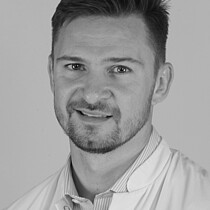
Project Title
Exploring Inflammatory Pathways Linking Depression and Comorbid Obesity
Project Description
Major depressive disorder (MDD) is associated with alterations in numerous biological systems, including a dysfunction of the immune system. While the cellular source of inflammation in MDD is still poorly understood, accumulating data point towards an increased activation of monocyte cell populations in depressed patients. Indeed, several studies, including prior work of our group, demonstrated that patients with MDD show an expansion of non-classical monocytes (also commonly referred to as »proinflammatory monocyte phenotype«). In addition, MDD frequently co-occurs with other inflammation-related conditions, such as metabolic syndrome and obesity. Interestingly, obese patients are reported to show a proinflammatory monocyte phenotype, which parallels previous findings in MDD. However, prior research has evaluated the proinflammatory monocyte phenotype in MDD and obesity only in separate studies. Furthermore, given that MDD and obesity have both been linked to inflammation, patients with comorbid MDD and obesity
might be especially suitable candidates for clinical trials of anti-inflammatory agents. Thus, the present BIH-project comprises two studies: a cross-sectional and a longitudinal study. The cross-sectional study examines putative differences in the proinflammatory monocyte phenotype and molecular signature across patients with MDD, obesity, comorbid MDD and obesity, and healthy controls. The longitudinal study, embedded in an ongoing RCT, examines whether add-on simvastatin (a lipid-lowering agent with pleiotropic effects including anti-inflammatory properties) to standard antidepressant treatment alters the proinflammatory monocyte phenotype and molecular signature in patients with MDD and comorbid obesity. The present BIH-project aims to provide new insights in the shared cellular and molecular inflammatory pathways of MDD and comorbid obesity, which could translate to new antidepressant therapies for comorbid patients.Dr. med. Laura Pletsch-Borba
Charité – Universitätsmedizin Berlin, Department of Endocrinology and Metabolic Diseases
Email: laura.pletsch-borba@charite.de
Fields of Research
- healthy ageing
- Insulin sensitivity

Project Title
Prevention of age related diseases by a dietary intervention rich in polyunsaturated fatty acids and protein: A detailed analysis of a 36-month randomized intervention and further insights in underlying mechanisms
Project Description
The European population older than 65 years is expected to rise from 16% in 2010 to nearly 30% in 2060 and with it, an increase in cardiovascular diseases, type 2 diabetes and sarcopenia has been observed. The term “healthy aging” is becoming increasingly important in referring to a successful adaption to the changes caused by age-increase. The NutriAct is a randomized multicenter controlled trial, which investigates the effects of a high-PUFA-high-protein dietary pattern in healthy ageing. With this project, we target i) to acquire a deep understanding of the effect of an isoenergetic high-PUFA-high-protein diet in cardiometabolic diseases, physical function and health in elderly, ii) to investigate potential mechanistic pathways mediating those changes and iii) to study factors related to a higher modulation of the dietary pattern.
PD Dr. med. Dominika Pohlmann, FEBO
Charité – Universitätsmedizin Berlin, Department of Ophthalmology
Email: dominika.pohlmann@charite.de
Fields of Research
- Uveitis
- Immunology
- Imaging

Project Title
Immunological and Morphological Signatures in Non-Infectious Chorioretinitis to Improve Therapy
Project Description
Non-infectious chorioretinitis, a form of posterior uveitis encompasses a group of potentially blinding disorders, predominantly occurring in the working age group. Birdshot-Retinochoroiditis (BSRC) and Punctate Inner Choroidopathy (PIC) are an organ-specific inflammation with distinct morphological and genetic characteristics. Disease hallmarks manifest as distinct multiple hypopigmented chorioretinal lesions in BSCR, small punctate lesions and choroidal neovascularization in PIC patients. Both diseases show a clinically progressive course with atrophy of the outer neurosensory retina and formation of fibrotic scars in the final stage. The etiology and pathogenesis are largely unknown but considered as driven by an autoimmune response. It is assumed that BSRC is a chronic T-helper 17-cell-mediated inflammation, but t only a few studies with single parameters and a small number of patients were reported. Therefore, the aim of my research project is to identify immunological and
morphological biomarkers in BSCR and PIC patients for better monitoring of inflammatory activity and prediction of disease progression. The T-cell subpopulation will be characterized and phenotyped by mass cytometry. The assessment of morphological signatures will be detected by using multimodal imaging techniques, such as optical coherence tomography, fluorescence- and indo- cyanine green angiography, fundus autofluorescence, and a new non-invasive modality the optical coherence tomography angiography (Pohlmann D et al., Ocul Immunol Inflamm. 2017; Pohlmann D et al. Br J Ophthalmology. 2017). All collected data will be brought into an overall context, in order to get a better understanding of these two diseases and potentially translate to more targeted therapy.Dr. med. Akira-Sebastian Poncette
Charité – Universitätsmedizin Berlin, Department of Anesthesiology and Intensive Care Medicine
Email: akira-sebastian.poncette@charite.de
Fields of Research
- Patient Monitoring
- Clinical Alarm Management
- Intensive Care Medicine
- Implementation Science

Project Title
INALO – Intelligent Alarm Optimizer for Intensive Care Units
Project Description
decades due to the monitoring of vital signs in intensive care units (ITS). However, between 72 and 99% of these alarms are described as false positives or »non-actionable «. They can trigger »alarm fatigue«, a desensitization of staff to critical alarms that can even lead to patient harm and even death. The goal of this project is to develop a user-centered platform that will enable research and implementation of alarm optimization approaches for patient monitoring in the ICU by means of patient-specifi c data and machine learning approaches. In doing so, the perspective is to achieve a reduction of unnecessary alarms. Digital documentation generates several gigabytes of health data every day. This data can already be used as a basis for artifi cial intelligence (AI) algorithms that support patient care in the ITS. The development of an alarm optimizer could promote a better understanding of the alarm situation, as well as reduce the workload of ICU staff and improve patient care by reducing unnecessary alarms.
Dr. med. Tobias Püngel
Charité – Universitätsmedizin Berlin, Department of Hepatology and Gastroenterology
Email: tobias.puengel@charite.de
Fields of Research
- Non-alcoholic steatohepatitis (NASH) & Fibrosis
- Immunology
- Metabolism
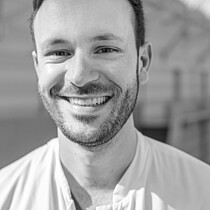
Project Title
In Depth Phenotyping and Functional Profiling of Macrophage Subsets in Chronic Liver Injury and Regression
Project Description
Non-alcoholic fatty liver disease (NAFLD) became the most common chronic liver disease worldwide and its prevalence is still increasing. NAFLD is closely associated with the metabolic syndrome and can progress to non-alcoholic steatohepatitis (NASH), which can further advance to fibrosis and ultimately liver cirrhosis. Strikingly, liver fibrosis is the main determinant of liver-related and overall mortality and in contrast to cirrhotic stages, liver fibrosis and NASH are considered as reversible. At present, therapeutic options beyond lifestyle modifications are limited and difficult to sustain – approved pharmacological therapies are still lacking. During disease progression of NASH and hepatic fibrosis multiple signalling pathways (e.g., disrupted metabolic and inflammatory responses) are dysregulated. Latest pathomechanistic insights prompted the experimental and clinical exploration of many new potential drug targets. In the current project we will further elucidate mechanistic insights of the cross-links between metabolism and inflammation in NASH and fibrosis progression. Going into detail, we will investigate effects of metabolism modifying interventions on macrophage functionality in experimental and human NASH employing up-to-date techniques (e.g., Single-cell RNA sequencing, 3D liver biochip system). Among potential inflammatory targets myeloid liver cells (Monocytes and Monocyte-derived Macrophages) emerged as key players orchestrating disease progression. Therefore, we will further elucidate effects of pharmacologically targeting macrophage recruitment on dysmetabolism in NASH and fibrosis. In a recent study we could demonstrate that targeting several PPAR isoforms in different cellular components of the liver (e.g. hepatocytes – PPARα, macrophages – PPARδ, stellate cells – PPARγ) dramatically improved the NASH phenotype over single PPAR isoform targeting in experimental mouse models (Lefere S*, Puengel T* et al, JHEP 2020). Based on these findings and as currently still ongoing clinical trials indicate that single drug treatments demonstrate lacking efficacy in reaching relevant endpoints such as fibrosis regression, we will additionally explore the prospects of rationally designed combination therapies in NASH and fibrosis.
Dr. med. Judith Rademacher
Charité – Universitätsmedizin Berlin, Department of Gastroenterology, Infectiology and Rheumatology (including Nutrition Medicine)
Email: judith.rademacher@charite.de
Fields of Research
- Acute Anterior Uveitis
- Axial Spondyloarthritis
- Biomarkers
- T Cell Receptor

Project Title
Gut-Joint-Eye Axis – Arthritogenic Antigens and Their Relevance in Acute Anterior Uveitis and Spondyloarthritis
Project Description
Axial spondyloarthritis (axSpA) is a chronic inflammatory disease which primarily affects the sacroiliac joints and axial skeleton, though also extra-spinal and extraarticular manifestations occur. Acute anterior uveitis (AAU) is the most frequent extra-articular manifestation and present in a third of axSpA patients. During my JCSP, we initiated a prospective cohort of 200 patients with non-infectious AAU (GESPIC-Uveitis), who underwent a standardized rheumatological assessment at inclusion as well as an MRI of the sacroiliac joints: In total, 56 % of the AAU patients had concomitant spondyloarthritis, mainly axSpA (Rademacher et al, Arthritis&Rheumatology 2023). Though the exact pathogenesis remains unknown up to date, both, axSpA and AAU seem to result from a complex interplay between a genetic background (mainly HLA-B27 positivity), external influences such as mechanic stress, (bacterial) infection and microbiota. According to the »arthritogenic antigen hypothesis« of pathogenesis, peptide antigens presented by HLA-B27 to CD8+ T cells might initiate autoimmunity in SpA. Our hypothesis is, that arthritogenic antigens might be part of the microbiome and lead to an activation of antigen-specific T cells in genetically predisposed individuums via disturbed gut and or skin barrier, thus triggering inflammation as autoimmune reaction in specific tissues (eye, gut, joint). The objective of this project is to identify diseasespecific clonal expanded T cell receptors and possible shared and distinct arthritogenic antigens in axSpA and AAU. The analysis of T cells from different tissues (peripheral blood, inflamed joint, anterior chamber of the eye) will enable us to compare their T cell receptor repertoire and challenge the arthritogenic anti-gene hypothesis. Furthermore, we will analyze whether those antigens are part of the gut microbiota. In a confirmatory analysis, we will verify our findings in the patients of the GESPIC-Uveitis cohort. We thereby aim to get a deeper understanding of the pathogenesis of axSpA and the gut-joint-eye axis.
Dr. med. Bianca Raffaelli
Charité – Universitätsmedizin Berlin, Department of Neurology and Experimental Neurology
Email: bianca.raffaelli@charite.de
Fields of Research
- Migraine
- Headache
- Sex Hormones
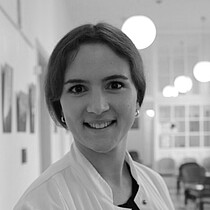
Project Title
Migraine across the Female Lifespan: Influence of Sex Hormones on Calcitonin Gene-Related Peptide (CGRP) in Tear Fluid and Plasma
Project Description
Migraine prevalence in women is three times higher than in men. Hormonal fluctuations play a crucial role in the generation of migraine attacks. According to the estrogen-withdrawal-hypothesis, a drop in estrogen concentrations can trigger migraine episodes. In line with this hypothesis, migraine frequency and severity are higher during the perimenstrual phase of the menstrual cycle but also in the perimenopausal period before hormonal stabilization at an older age. The pathophysiological mechanisms leading from hormonal changes to the development of migraine attacks are still widely unknown. The neuropeptide Calcitonin Gene-Related Peptide (CGRP) has a key role in migraine initiation. During a migraine attack, CGRP is released from trigeminal afferents and triggers an inflammatory response. Preliminary preclinical research suggests that sex hormones fluctuations can lead to activation of the trigeminovascular system and release of CGRP, which may explain the high prevalence of migraine in women of childbearing age. One-third of all women of childbearing potential in Europe take oral contraception, most commonly combined oral contraceptives (COC). The regular intake of a COC leads to suppression of the physiological hormonal fluctuations. The effect of COC on migraine is highly variable, with migraine attacks occurring most frequently during the seven-day hormone-free interval. The exact association between COC intake and CGRP release remains to be determined. From a methodological angle, the accurate measurement of CGRP in peripheral blood samples is challenging. CGRP has a short half-life time and is subject to dilution effects after release. The measurement of CGRP in tear fluid has recently been proposed as a non-invasive and more direct method due its spatial proximity to the trigeminal nerve. This research project aims to elucidate the complex relationship between sex hor-mones and CGRP in different hormonal states across the female lifespan (regular menstrual cycle, COC, postmenopause). Key research questions are: 1) How do different hormone profiles affect CGRP release? 2) Does the impact of sex hormones on CGRP differ between patients with migraine and healthy controls? 3) To what extent is CGRP measurement in tear fluid feasible for clinical practice?
The findings of this project could help to explain the changes in migraine frequency in the course of life of women and specifically during the menstrual cycle and under contraceptive treatment.Prof. Dr. med. Nathanael Raschzok
Charité – Universitätsmedizin Berlin, Department of Surgery
Email: nathanael.raschzok@charite.de
Fields of Research
- Liver transplantation
- Organ reconditioing
- Colorectal liver metastases

Project Title
Regenerative Concepts in Transplantation
Project Description
The success of liver transplantation is limited by the number of available liver grafts, and a relevant number of liver grafts is declined due to quality concerns. The aim of our work is to increase the number of liver grafts for transplantation by applying of concepts from regenerative medicine. We are using ex vivo liver machine perfusion to assess the quality of marginal liver grafts, which are compromised e.g. by steatosis hepatis or by elevated age of the donor, and we are developing
strategies for reconditioning of these grafts. We have developed a rodent model of normothermic liver machine perfusion which we are using for dose-response studies, and we are using a rat liver transplant model to assess liver grafts after reconditioning. Moreover, we are developing clinical protocols for quality assessment of marginal or declined liver grafts by machine perfusion to expand the donor pool for transplantation.Dr. med. Diplom. Math. Momsen Reincke
Charité – Universitätsmedizin Berlin, Department of Neurology and Experimental Neurology
Email: momsen.reincke@charite.de
Fields of Research
- Autoantibodies
- SARS-CoV-2
- Neurology

Project Title
Autoantibodies Against the NMDA Receptor
Project Description
NMDA receptor (NMDAR) encephalitis is the most common autoimmune encephalitis causing psychosis, epileptic seizures and cognitive impairment. The underlying pathogenic autoantibodies target the GluN1 subunit of the NMDAR and lead to internalization of the receptor as well as profound synaptic changes. Although the pathogenic role of NMDAR autoantibodies is undisputed,
detailed insights into the pathophysiology of NMDAR antibodies are missing, therefore hindering the progress of disease-specific immunotherapies. One reason for this is the limited availability of patient-derived monoclonal antibodies against the NMDAR. In this project, new antibodies against the NMDAR will be cloned from patients with NMDAR encephalitis. Using these new antibodies, I want to answer the following questions: 1. »What is s the antigenic landscape of the NMDAR?« –
Where do the majority NMDAR antibodies bind to the NMDAR? How can different classes of antibodies be grouped, in particular with respect to their overlapping epitopes between GluN1 and other NMDAR subunits? 2. »Where do pathogenic antibodies exert their effect?« – How does the pathogenic potential of NMDAR mAbs correlate with their epitope, their affinity, or other biophysical
properties? 3. »Where do the pathogenic antibodies come from?« – Can structural or functional properties of NMDAR mAbs be correlated with their antibody sequence features? 4. »What is the difference between pathogenic and beneficial or neutral NMDAR mAbs?« – How do NMDAR mAbs
from different compartments in patients (CSF, teratoma, blood), or different disease stages (acute phase, remission) compare with NMDAR mAbs from healthy people? 5. »Are there public NMDAR clonotypes, similar to what has been found in the SARS-CoV-2 antibody response«? – Do certain combination of germline antibody sequences predispose to NMDAR binding? Answering these questions will provide important insights into the pathophysiology of the most common form of autoimmune encephalitis and related pathological processes including autoimmune dementia and
autoimmune psychosis.Dr. med. Rolf Otto Reiter
Charité – Universitätsmedizin Berlin, Department of Radiology (including Pediatric Radiology)
Email: rolf.reiter@charite.de
Fields of Research
- Quantitative MRI
- MR Elastography
- Deep Learning
- Inflammation

Project Title
Quantitative Spatially-Resolved MRI Of Fibrosis and Inflammation in Chronic Liver and Bowel Disease
Project Description
Purpose: The aim is to determine fibrosis and inflammation in chronic liver and intestinal diseases using quantitative MRI (qMRI) and artificial intelligence. Background: Determination of disease activity of fibrosis (scar tissue) and inflammation is often crucial for therapy, but so far can only be determined with invasive procedures, such as biopsies or endoscopies. This is particularly true for
cholestatic liver disease (e.g., primary sclerosing cholangitis), fatty liver disease, and inflammatory bowel disease (Crohn's disease and ulcerative colitis). These diseases share a common diagnostic gap: determining the spatial distribution -or heterogeneity- of fibrosis and inflammation. Methods: Spatially resolved qMRI can measure this heterogeneity using the following sequences: Tomoelastography (shear-wave speed in m/s), T1 and T2 mapping (relaxation times in ms), diffusion imaging (ADC in mm2/s), fat quantification (in %). Image acquisition and image processing of multiple quantitative biomarkers simultaneously creates a system-independent database and provides the basis to train neural networks. This enables identification of the best parameters for classification of fibrosis and inflammation in liver and intestine. Automated diagnosis of the quantitative image data is performed using a 3D Multi-Channel Convolutional Neural Network. In this process, the different biomarkers can be tested separately and in all possible combinations. Clinical benefit: The number of
invasive procedures, such as biopsies, endoscopies, and surgeries, could be reduced. In addition, specific biomarkers could be established for stratification of clinical trials and development of new therapies.Dr. med. Tizian Rosenstock
Charité – Universitätsmedizin Berlin, Department of Neurosurgery
Email: tizian.rosenstock@charite.de
Fields of Research
- Deep neural networks
- Navigated transcranial magnetic stimuation
- Brain tumor surgery

Project Title
Development of Neural Networks for Brain Tumor Patient Imaging Analysis
Project Description
The gold standard for treatment of intrinsic brain tumors is a complete resection since the extent of resection (EOR) is positively correlated with (progression free) survival. However, the goal of complete tumor removal should always be balanced with preservation of function, because eloquent brain tumors imply the risk of a new functional deficits which not only lead to reduced quality of life, but also to reduced survival. We recently validated our risk stratification model based on regression tree analysis that enables to estimate the risk of postoperative motor deficit based on navigated transcranial magnetic stimulation [nTMS] and diffusion tensor imaging (DTI) data. A tumorous motor cortex infiltration and a distance ≤8mm to the corticospinal tract were risk factors for the development of a new postoperative motor deficit. In these cases, the risk was even higher if we could demonstrate impaired cortical excitability, which is determined by the motor resting threshold. The aim of this project is to combine different modalities such as structural MRI scans (with diffusion tensor imaging), nTMS data and patient characteristics using deep neural networks to further increase the accuracy of motor outcome prediction and identify new correlations where appropriate. In our initial analysis, we built on deep neural networks to predict the patients’ postoperative motor status based solely on their preoperative T1 with contrast agent scans. To improve our model performance, we decided to completely revise and adapt the preprocessing of the data and to integrate different modalities in our model as well. After training the model, its performance is further improved by expert validation (supervised learning) and by integrating external data In collaboration with other neurosurgical centers. We plan to develop a freely available web-based decision support tool that can be accessed by any neurosurgeon. In a web-based template, the treating neurosurgeon can enter all relevant patient characteristics and upload the available MRI and nTMS data. The probability of perioperative risk for a new motor deficit is provided, as well as an estimate of the patient's EOR, tumor histology, and survival rate. Relevant risk factors such as tumor motor cortex infiltration or corticospinal tract involvement are reported in a standardized manner.
Dr. med. Lisa-Maria Rosenthal
German Heart Center Berlin, Congenital Heart Defects - Pediatric Cardiology
Email: rosenthal@dhzb.de
Fields of Research
- Congenital Heart Disease
- Single Ventricle
- Remote Patient Monitoring

Project Title
Digital Care Hub for In-Home Surveillance of Infants with Single Ventricle Heart Disease
Project Description
Children born with single-ventricle heart defects (SVHD) have been experiencing substantial improvements from compassionate care to long-term survival due to the development of an innovative three-stage surgical palliation. After the first surgery, children are particularly at risk for life-threatening events with high mortality rates up to 20%. This has led to the implementation of in-home or in-hospital surveillance strategies. Long hospital stays and frequent visits at the outpatient department are necessary to date resulting in a poor quality of life for the children and their families. The digital care hub for in-home surveillance of infants with SVHD is a prospective longitudinal cohort study to investigate an application-based remote patient monitoring. With the application “Evie” caregivers will be asked to conduct and record daily measurements of vital parameters and fluid intake of their SVHD children. Data will be transferred to the health care team. Weekly video consultations will be performed and caregivers will periodically report the health-related quality of life of their children with ePROMs (electronic patient-reported outcome measurements). The aim of the study is to avoid life-threatening events, to optimize heart failure therapy and somatic growth of the children while reducing the number of hospital admissions and appointments to improve their health-related quality of life. Furthermore the adoption of technology and the impact on therapy adherence by caregivers will be investigated.
PD Dr. med. Lynn Jeanette Savic
Charité – Universitätsmedizin Berlin, Department of Radiology (including Pediatric Radiology)
Email: lynn-jeanette.savic@charite.de
Fields of Research
- Molecular MR Imaging
- Hepatocellular Carcinoma
- Tumor Microenvironment

Project Title
Non-Invasive Imaging Biomarkers for the Immuno-Metabolic Crosstalk in Liver Cancer
Project Description
Hepatocellular carcinoma (HCC) is the third most common cause of cancer-related deaths worldwide with the majority of cases being diagnosed at intermediate or advanced stages. In unresectable HCC, loco-regional therapies (LRT) including tumor ablation and embolotherapies represent guideline-approved treatments. While systemic approaches have largely failed to elicit significant prognostic advantages, this negative trend has recently been challenged by the emerging concept of immune-checkpoint inhibitors (ICI). Specifically, combination treatments with ICIs resulted in improved survival compared to standard treatment in advanced disease (Imbrave-150, HIMALAYA trial) but only in a subset of patients, calling for further strategies to improve tumor susceptibility to therapy.
While a variety of resistance mechanisms are under investigation, the immuno-metabolic crosstalk as an organizing principle of tumoral immune evasion has gained significant interest. One postulated underlying factor is the acidification of the tumor-surrounding microenvironment (TSE) driven by hyperglycolytic tumor metabolism (“Warburg effect”). This acidic TSE contributes to exhaustion and quiescence of local immune cells in an oftentimes anyway inherently tolerogenic, chronically inflamed cirrhotic liver. Additionally, the metabolic state of the tumor plays a pivotal role in shaping the extracellular matrix (ECM), which may facilitate the creation of a biophysical barrier for an immuno-compromised, pro-tumorigenic niche.
Currently, no technique other than invasive tissue biopsy can reliably provide insight into the molecular tumor characteristics. Thus, novel methodologies are urgently needed to non-invasively characterize the mechanisms of immunosuppression mediated by the immuno-metabolic crosstalk in HCC in vivo. Such tools may further allow for the visualization of LRT-induced alterations to design strategies to convert tumor habitats from being resistant towards being susceptible to LRT and immuno-oncological treatments.
Therefore, this project is focused on developing novel MRI techniques for non-invasive in vivo profiling of liver tumors in a translational rabbit model including the assessment of tumor vascularity, cellularity, acidity, ECM components, and immune cells. If implemented in patient care, the findings may promote a paradigm shift away from a “one-size-fits-all” indication and transform LRT and immunotherapies for HCC into personalized, TSE-directed treatments.Dr. med. Marie Schafstedde
Charité – Universitätsmedizin Berlin, Institute of Computer-assisted Cardiovascular Medicine and German Heart Center Berlin, Congenital Heart Defects - Pediatric Cardiology
Email: schafstedde@dhzb.de
Fields of Research
- Image-Based Numerical Modelling
- Machine Learning
- Digital Health

Project Title
Precision therapy planning in heart diseases - A digital solution combining AI, computational modelling & synthetic data
Project Description
Valvular heart diseases are one of the most common causes of heart failure that can affect both, children and adults. Accurate treatment planning is therefore crucial but can be very challenging especially in complex valve defects such as combined aortic stenosis and mitral valve regurgitation. To date, clinical guidelines are based on rather indirect parameters such as valve orifice area, heart size or pressure gradients to determine if and when an intervention is recommended. However, they do not provide any support as to which procedure will have the best functional outcome in an individual patient. Especially within the interdisciplinary decision process of the “Heart Team”, digital support systems could help the physician not only with the optimal timing but also with deciding which type of intervention provides the best results (e.g., surgical vs. interventional valve replacement; one vs. double valve intervention). Due to the high prevalence of valvular heart diseases, such solutions would have a very high socio-economic impact.
The aim of this project is hence to develop a digital treatment planning solution that combines Artificial Intelligence (AI) and physiology-based models, allowing physicians to simulate treatment strategies and their hemodynamic outcomes for heart valve diseases interactively and in real-time.
To achieve this task, different digital methodological approaches will be applied:
Firstly, a statistical shape model of the aortic and mitral valve as well as the left ventricle is generated based on patient-specific reconstructions of those anatomical structures. This allows the generation of synthetic anatomies, increasing the amount of existing clinical data and thereby the training data set for the AI-algorithms trained subsequently.
Secondly, for each clinical and synthetic anatomy, hemodynamic information will be provided using computational fluid dynamics, a method allowing simulation of spatially and temporally resolved blood flow in complex, anatomical structures. Thus, the complete hemodynamic information as well as derived parameters relevant for clinical use are calculated for each case.
Thirdly, AI-based methods are then trained on this data to learn predicting hemodynamic parameters based on the anatomical information only.
The results of the interactive real-time therapy planning solution will finally be validated against existing clinical data.Prof. Dr. Jan Friedrich Scheitz
Charité – Universitätsmedizin Berlin, Department of Neurology with Experimental Neurology
Email: jan.scheitz@charite.de
Fields of Research
- Cardiac imaging after stroke
- Brain-heart interaction
- Post-stroke cardiovascular complications

Project Title
Brain-heart interaction
Project Description
Jan F. Scheitz is consultant stroke neurologist and Professor of Clinical Stroke Research at the Department of Neurology Charité in Berlin, Germany and at the Center for Stroke Research Berlin (CSB).
Dr. Scheitz is head of the research group “Integrative Cardio-Neurology”. Together with his group, his major research interests include all aspects of Heart & Brain interaction, post-stroke (cardiac) complications, mechanisms and prognostic impact of cardiac troponin elevation after stroke, and use of cardiovascular MRI in acute stroke.
His major motivation is to improve clinical awareness of post-stroke cardiac complications, and to promote interactive collaborations between stroke neurologists and cardiologists.
He is Fellow of the European Stroke Organisation (FESO) and founding member of the „Heart&Brain Task Force“ of the World Stroke Organisation (WSO).Dr. med. Christian Schinke
Charité – Universitätsmedizin Berlin, Department of Neurology and Experimental Neurology
Email: christian.schinke@charite.de
Fields of Research
- Neurology
- Omics
- Stem cells

Project Title
Modelling Chemotherapy Induced Neurotoxicity with Patient- Specific Induced Pluripotent Stem Cell-Derived Sensory Neurons
Project Description
Chemotherapy-induced neuropathy (CIN) is a highly prevalent, potentially irreversible adverse effect of cytotoxic chemotherapy characterized by altered sensation, sensory loss and neuropathic pain. At present, its underlying molecular mechanisms are incompletely understood and it is not possible to predict individual CIN susceptibility in patients. As therapeutic options are still limited to unsatisfactory symptomatic treatments, chemotherapy-induced neurotoxicity represents an immense unmet medical need. With the generation of stem cells from adult human cells and their further differentiation into sensory neurons, otherwise inaccessible human tissue has become available to model disease. We apply patient-specific neurons with high-throughput multi-omic approaches, bioinformatic pathway analyses and the functional integration of the results in relation to the clinical phenotype. Combining these tools enables a potent human in-vitro model to discover meaningful molecular mechanisms of toxic neurodegeneration, biomarker discovery and the development of preventive treatment strategies.
Dr. med. Jens Florian Schrezenmeier
Charité – Universitätsmedizin Berlin, Department of Hematology, Oncology and Cancer Immunology
Email: jens-florian.schrezenmeier@charite.de
Fields of Research
- Long-read sequencing
- Genomics
- Hematologic Malignancies
- Molecular Diagnostics

Project Title
Improved Molecular AML Diagnostics-Prerequisite for Individualized Patient Management
Project Description
Genetics and cytogenetics play a pivotal role in diagnosis and treatment of acute myeloid leukemia (AML) but also other malignancies such as Lung Cancer and Multiple Myeloma. Improvements in AML genetic diagnostics are a prerequisite for individualized patient management. Yet, current second generation sequencing methods are hard to implement into daily clinical routine with regard to the application of rapid cytogenetics and methylation profiling. To address these clinical needs in AML and
other malignancies we will use third generation long-read (Nanopore) sequencing that allows to directly read information from the nucleic acid strand enabling rapid high-resolution karyotyping and access to DNA and RNA modification information that was out-of-reach in molecular diagnostics. Access to this new dimension of molecular information will lead to a better understanding of disease biology and improve treatment approaches.Dr. med. Magdalena Seethaler
Charité – Universitätsmedizin Berlin, Department of Psychiatry and Neurosciences
Email: magdalena.seethaler@charite.de
Fields of Research
- Psychosis
- Geriatric psychiatriy
- Cognitive neuroscience

Project Title
Neurocognition in patients with non-affective psychosis in the second half of life (NAP-2)
Project Description
Patients in the second half of life suffering from schizophrenia and related diseases are rarely represented in studies, predominantly because of the patients’ age and weak reliability. As a consequence, knowledge of the critical characteristics of this disease in the second half of life is lacking, especially regarding influencing factors on a favorable course of disease.
Neurocognitive deficits can be sequelae of non-affective psychosis, negatively influence the course of disease and impair participation in society. Impairment of neurocognitive abilities occurs early, frequently and most likely stable. However, data on elderly patients in comparison with healthy controls are lacking, which makes it unclear whether the cognitive deterioration is age-appropriate. It can be assumed that there are disease- and treatment-related factors with a negative impact on neurocognition. Risk factors for an above-average neurocognitive deterioration may be an unfavorable cardiovascular risk profile, a long-term therapy with antipsychotics, consumption of alcohol or nicotine, missing physical exercise, alterations in the brain volume and psychosocial variables such as socioeconomic status or social integration.
The presented study aims as the first of its type at investigating how differences in neurocognition between patients with non-affective psychosis and healthy controls in the second half of life evolve and which biological and psychosocial influencing factors are crucial. Therefore, a cross-sectional observational study including four age cohorts (in patients and healthy controls, aged 40 years or older) and a retrospective questioning is planned.
If the age-related neurocognitive deterioration is stronger in patients with non-affective psychosis, risk factors that are linked to the neurocognitive deficits could be identified. Hence, the planned study may reveal potential modifiable risk factors and form the basis of therapeutic interventions, health policy and social measures in order to diminish the course of disease of patients with non-affective psychosis.Dr. rer. medic. Maria Sekutowicz, M.Sc.
Charité – Universitätsmedizin Berlin, Department of Anesthesiology and Intensive Care Medicine
Email: maria.sekutowicz@charite.de
Fields of Research
- Postoperative Delirium
- Multivariate Prediction
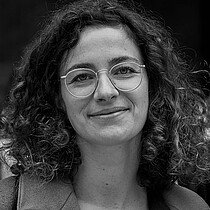
Project Title
Neuropsychiatric biomarkers for the prediction of postoperative delirium
Project Description
By using machine learning techniques complex and multidimensional routine data can be utilized for the individual prediction of postoperative delirium (POD). Delirium incidence after surgery ranges from 5-54% for different patient cohorts and is associated with high complication rates, prolonged hospitalization and increased mortality. In the literature a variety of serological, molecular and neuroimaging factors have been described to be relevant for the pathogenesis of POD. On the neurobiological level functional connectivity as well as volumetric measures have been associated with POD. However, as the neurocognitive mechanisms behind POD have not been fully uncovered prediction of POD on an individual level remains insufficient. In my project I will use multivariate analyses and include magnetic resonance images to establish a machine learning algorithm that will be validated in big routine data to predict POD. A similar approach has already been successful in past, where a multivoxel classification algorithm was used to predict relapse in alcohol dependent patients and future drinking in an independent cohort of young adults (Sekutowicz et al., 2019). Besides neurocognitive symptoms, also affective and psychotic symptoms occur frequently in POD patients including forms of perceptional disturbances, hallucinations and delusional thinking. Clinical as well as subclinical depression has already been identified as a risk factor for POD. Therefore, it may be hypothesized that clinical but also subclinical symptoms along a continuum between normal and delusional thinking account as predisposing factors for the development of POD. To evaluate this hypothesis patients with POD will be analyzed according to their psychiatric comorbidities in routine data as well as according to their psychosis proneness. Taken together, this project aims at a multivariate prediction of POD to pave the way for a clinically applicable practice and get further insight into predisposing factors for POD.
Dr. med. Elise Siegert
Charité – Universitätsmedizin Berlin, Department of Rheumatology and Clinical Immunology
Email: elise.siegert@charite.de
Fields of Research
- Immunology
- B cells
- COVID

Project Title
Neuromuscular Involvement in Systemic Sclerosis
Project Description
The aim of my project is to assess the prevalence and nature of neuromuscular involvement in Systemic Sclerosis (SSc). SSc is a rare connective tissue disease characterized by the pathophysiological triad of microvascular dysfunction, tissue fibrosis and autoimmune inflammation. Specifically, we will screen patients for symptoms of small fiber neuropathy (SFN) and confirm the diagnosis by skin biopsy. Recent studies show that approximately 45% of all patients suffer from neuropathic pain. However, there is no study systematically evaluating potential causes of neuropathic pain in SSc. Even though SFN is a well-recognized complication of other connective tissue diseases such as Systemic Lupus Erythematosus, it has not been assessed as a cause for neuropathic pain in SSc, yet. Our hypothesis is that SFN is a common complication of SSc. In a second project we will perform a retrospective analysis of SSc muscle biopsies according to current neuropathological standards. We will try to identify a morphological pattern that is specific to SSc. We reckon that the origin of neuromuscular involvement in SSc is not only destructive fibrosis and obliterative vasculopathy, but that the interplay between immune cells and nerve cells is responsible for peripheral tissue damage.
Dr. med. Laura Katharina Sievers
Charité – Universitätsmedizin Berlin , Medical Department, Division of Nephrology and Internal Intensive Care Medicine
Email: laura‐katharina.sievers@charite. de
Fields of Research
- Hypertensive End‐Organ Damage
- CD4+ Lymphocytes
- Hippo Signaling

Project Title
Significance of the Transcription Factor TAZ in Lymphocytes for Treg/TH17 Balance and Ang II-Induced End-Organ Damage
Project Description
Immune mechanisms play an important role in the pathogenesis of arterial hypertension; they contribute to both, the development of hypertension and hypertensive end-organ damage. CD4+ lymphocytes are key cell types involved in this pathogenesis, particularly the balance between regulatory T cells (Treg) and IL-17-producing cells (TH17), that both originate from naive CD4+ cells under specific skewing conditions. TH17 cells are associated with hypertension and hypertensive end-organ damage while a protective role is attributed to Treg. Intracellular pathways that balance the differentiation of Treg and TH17 include TGFβ, IL6, RORγT, Hippo/TAZ, HIF1α. All these pathways are also directly influenced by Ang II/AT1R signaling. In this project, we focus on the
Hippo pathway transcription factor TAZ in T cells during Ang II-induced hypertensive end-organ damage. We hypothesized that CD4-specific TAZ deletion is sufficient to prevent Ang II-induced vascular, renal and cardiac dam- age. Further, we characterize the impact of external factors and ultimately the local organ micromilieu (e.g. oxygen supply, osmolarity, extracellular matrix) and molecular signaling regulating Hippo pathway activation in CD4+ T cells under Treg/ TH17 skewing conditions.Dr. med. Farzan Solimani
Charité – Universitätsmedizin Berlin, Department of Dermatology, Venereology and Allergology
Email: farzan.solimani@charite.de
Fields of Research
- Dermatology and Immunology
- Skin immunology
- T cells
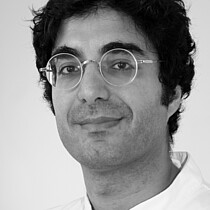
Project Title
Functional characteristics of T (follicular) regulatory cells in pemphigus
Project Description
Pemphigus, a severe blistering disorder of skin and mucosa characterized by autoantibodies against desmosomal proteins of the skin, is a model disease to study autoimmunity in humans. A harmed immunosuppressive capacity of T regulatory cells (Treg) is one of the critical checkpoints leading to autoimmunity, since their deficiency or impairment facilitates the disruption of immune homeostasis. Treg cells constitute ~5% of circulating CD4+ T cells, and are characterized by the lineage marker forkhead box protein P3 (FoxP3). Treg cells can be defined through detection of FoxP3 and by their expression of CD25 and CD127 (CD4+CD25+CD127low). Accordingly, similarly to several other autoimmune disorders, there is a wide literature demonstrating that the function of Treg cells is impaired in pemphigus. T Recent advances depict a more complicated mosaic. For instance, it has been shown that some Treg cells - beside their classical production of the anti-inflammatory interleukin (IL)-10 - may produce IL-17 or Interferon (IFN)-ɣ, thus indicating that this cell group is more heterogeneous than previously described and could therefore differently be implicated to dampen inflammation. Recently, a follicular counterpart of Treg cells has been described, namely T follicular regulatory (Tfreg). These cells can migrate in to the germinal centers and modulate the immune answer due to the expression of the chemokine receptor CXCR5. The role of this cell population is controversial. While some studies described these cells as anti-inflammatory, there is also evidence that under some circumstances Tfreg can support inflammation and antibody formation in germinal centers. In the setting of influenza virus infection, Tfreg are necessary for the generation of virus specific long-lived plasma cells and for antibody production. Yet, a recent study rather describe an anti-inflammatory role for Tfreg cells, which can dampen B cell activity through release of neuritin. In Pemphigus, several studies tried to analyze the role of Treg cells, whereas any group investigated the role of Tfreg cells. Some studies detected the presence of lower levels of Treg cells in pemphigus patients compared to healthy controls, and the induction of Treg cells has been associated to decreased pathogenicity in a HLA-transgenic mouse model of Pemphigus.
In pemphigus, neither the heterogeneity of the Treg/Tfreg cells nor their different capacity to modulate inflammation have been analyzed. This project aims to elucidate the heterogeneity of the Treg/Tfreg subset in pemphigus. The definition of specific subset, which may carry stronger immunosuppressive capacity than others, may help to detect new therapeutic targets in this strongly debilitating autoimmune disorder.Dr. med. Jonas J. Staudacher
Charité – Universitätsmedizin Berlin, Division of Gastroenterology, Infectiology and Rheumatology
Email: jonas.staudacher@charite.de
Fields of Research
- Inflammatory Bowel Disease
- Inflammation
- TGF-beta Superfamily Signalling
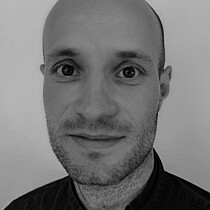
Project Title
Clinical and Molecular Characterization of Pouchitis after Ileal Pouch-Anal Anastomosis in Ulcerative Colitis Patients
Project Description
Ulcerative colitis (UC) is a chronic autoimmune disease of the colon and rectum affecting approximately 150.000 patients in Germany alone. Despite considerable progress through the initiation of biologicals in the treatment of UC, a significant portion of patients require colectomy
in the course of disease, either due to medication-refractory flare or diagnosis of colitis-associated colorectal cancer. After total colectomy, the creation of an Ileal pouch-anal anastomosis (IAAP) is the preferred surgical procedure, as it guarantees the highest possible quality of life by preserving continence and through a reduction of stool frequency. Unfortunately, a significant portion of patients develop at least one episode of inflammation of the pouch, whilst the majority of patients suffering an episode of pouchitis experiencing multiple episodes. The exact pathomechanism of pouchitis is still incompletely understood. An interaction between the gut/ pouch microbiome and host factors such as genetic polymorphisems is assumed. In this project, we aim to characterize
this underinvestigated disease molecularly and clinically. Through a better understanding of the underlying pathomechanisms, we hope to improve patient care and outcomes.Dr. med. Lara Mirja Steinbrenner
Charité – Universitätsmedizin Berlin, Department of Neurology and Experimental Neurology
Email: mirja.steinbrenner@charite.de
Fields of Research
- Epilepsy
- MRI
- EEG
- Epilepsy Surgery

Project Title
Using Computational MRI to Automatically Detect Epileptogenic Lesions in Patients Eligible for Epilepsy Surgery
Project Description
Epilepsy affects about 70 million people worldwide; it is one of the most common neurological disorders in children and adults. Up to one third of patients are drug-resistant, with poorly controlled seizures despite adequate medication. Epilepsy surgery is the most successful treatment option to achieve seizure freedom for patients with focal drug-resistant epilepsy, which on average is achieved in 65% of patients. The absence of an epileptogenic lesion on MRI has been shown to decrease the probability of seizure freedom by more than 20%. The detection of an epileptogenic lesion on MRI in so far assumed non-lesional pre-surgical candidates remains an important challenge to improve surgical targeting and secondarily postsurgical outcome. In this retrospective study, we assess a new approach to detect individualized lesions in patients with epilepsy in a large cohort, two-center study by applying an outlier lesion detection machine-learning algorithm. Pre- and if available postoperative MRI scans (T1-weighted (T1 MPR) and T2-weighted FLAIR) of all consecutive patients having received a recommendation to undergo epilepsy surgery, between 2015 and 2020 at the Epilepsy centers in Berlin and Bochum, will be analyzed. Clinical variables, including the clinical and neurophysiological focus hypothesis consensus from the multidisciplinary meetings (MDM), will be collected for each patient. Additionally, we are comparing this new approach to previously published methods by applying them to the same data set. The primary outcome measure is the outlier lesion concordance with the epileptogenic focus defined by MDM consensus. Concordance is defined by localization in the same gyrus or lobe (depending on specificity of presurgical lesion-hypothesis). The secondary outcome measure is the overlap between the outlier lesion and surgical resection site. In the long run, we hope, by applying the outlier lesion detection method successfully, to enable more surgeries in non-lesional cases and potentially cut down the use of invasive diagnostics such as intracranial EEG.
Teresa Straka
Charité-Universitätsmedizin Berlin, Klinik für Pädiatrie m.S. Onkologie und Hämatologie (CVK)
Email: teresa.straka@charite.de
Fields of Research
- pediatric oncology & hematology
- immunology
- oncology & hematology

Project Title
Development of AURKA inhibitor-resistant CAR T cells for advanced neuroblastoma killing
Project Description
Neuroblastoma is the most common extracranial, solid tumor in children, accounting for 15% of all pediatric cancer deaths worldwide. In neuroblastoma, a MYCN amplification is usually associated with high-risk groups, where patients are still facing survival rates of less than 50%, therefore highlighting the need for the development of new targeted therapies. One therapy option could be a combinational treatment consisting of two parts: Chimeric antigen receptor (CAR) T cell therapy combined with the Aurora Kinase A inhibitor (AURKAi) LY3295668, which indirectly inhibits MYCN. By enhancing the recruitment of CAR T cells to the tumor site and by improving tumor cell killing altogether, this combinational approach might be a promising treatment to improve CAR T cell therapy against MYCN amplified neuroblastoma. However, it was demonstrated that the function of Aurora Kinase A is necessary for proper effector function of CAR T cells. Therefore, the aim of my project is to generate neuroblastomaspecific CAR T cells, expressing an Aurora Kinase A mutant variant, which confers resistance to AURKAi LY3295668 in order to efficiently combine AURKAi with CAR T cell therapy, without compromising the effector function of CAR T cells.
Dr. med. Charlotte Thibeault
Charité – Universitätsmedizin Berlin, Speciality Network: Infectious Diseases and Respiratory Medicine
Email: charlotte.thibeault@charite.de
Fields of Research
- Pathophysiology of pneumonia, including nosocomial and ventilator-associated pneumonia
- Clinical studies in infectious diseases
- Immune cell and microbiota signatures in pneumonia

Project Title
Immune- and microbiota analyses to identify risk factors and biomarkers of ventilator-associated pneumonia
Project Description
Approximately 10% of patients admitted to the intensive care unit (ICU) who are newly ventilated will develop ventilator-associated pneumonia (VAP); a condition associated with prolonged hospital stay and high morbidity and mortality. The pathophysiology of VAP is not fully comprehended but it likely involves microbiota perturbations and related impairment of colonization resistance and antibacterial defense. Current diagnostic criteria for VAP have low specificity and sensitivity leading to undertreatment and adverse outcomes or overtreatment, associated with microbiota perturbations and emergence of multi-drug-resistant pathogens. More clearly molecularly defined diagnostic criteria may provide substantial improvements over current diagnostic strategies. Moreover, there is an urgent medical need for the discovery of novel prophylactic strategies.
Our main hypothesis is that we will be able to detect alterations in the molecular signatures of respiratory and peripheral blood immune cells, the microbiome, and the metabolome, preceding VAP. Our secondary hypothesis is that these signatures, across these distinct cellular and molecular compartments, are further interlinked and may co-evolve over the clinical course.
To test these hypotheses, we conduct a longitudinal, observational clinical cohort study enrolling patients recently admitted to the intensive care unit. We retrospectively identify patients developing VAP (cases) and those who don’t (controls). Biological samples of cases and controls will be comparatively analyzed by single cell multi-omics, metagenome sequencing, metabolomics, and integrative computational methods. Thus, we aim to gain new insights and hypotheses about the pathophysiology and risk factors of VAP and identify potential new biomarkers and targets for novel prophylactic strategies or diagnostic tests.Dr. med. Loredana Vecchione
Charité – Universitätsmedizin Berlin, Department of Hematology, Oncology and Cancer Immunology
Email: loredana.vecchione@charite.de
Fields of Research
- Translational research
- Biomarker discovery in CRC
- Identification of new therapeutical options in CRC

Project Title
Studying the Concordance of Molecular Subtypes of Primary and Metastatic CRC in Patient Samples and Organoids
Project Description
Focus on my research is the better understanding of the CRC biology in order to identify new therapeutical options for the treatment of CRC. To this end, we use CRC organoid models and we compare in vitro data with in vivo data. We furthermore stratify our models, as well as patients samples in different molecular subtypes in order to define subgroups who may benefit from existing and new emerging treatments.
Dr. med. Jan Voss
Charité – Universitätsmedizin Berlin, Department of Oral and Maxillofacial Surgery
Email: jan.voss@charite.de
Fields of Research
- bone healing
- immune system

Project Title
Biomarker for Impaired Bone Healing of the Mandible
Project Description
This prospective research project is a hypothesis-testing blinded study design. The project objective is to prospectively validate CD8+ TEMRA cells as a biomarker for impaired fracture healing in (A) mandibular corpus fractures and (B) mandibular osteotomies in the setting of mandibular displacement surgery. The project hypothesis here is that CD8+TEMRA cell expression acts as a potential prognostic biomarker with high diagnostic precision in terms of differentiating between normal and impaired fracture healing.
Dr. med. univ. MSc. Nikolaus Wenger, PhD
Charité – Universitätsmedizin Berlin, Department of Neurology with Experimental Neurology
Email: nikolaus.wenger@charite.de
Fields of Research
- Motor Recovery
- Neuroprosthetics
- Stroke Research

Project Title
Inducible Neuroplasticity after Stroke using Neurotransmitter Replacement Strategies
Project Description
Translating the behavioral output of the nervous system into movement involves interaction between the brain and the spinal cord. The brainstem provides an essential bridge between these two structures. However, the function of this intermediary system in motor recovery after stroke remains poorly understood. In fact, the brainstem is a major source of monoaminergic neurotransmitters that coordinate movement at the level of the spinal cord (Wenger et al. 2016) and mediate plasticity in the central nervous system (Ng et.al 2015). My hypothesis is that motor cortex stroke alters the activity of monoaminergic brainstem nuclei limiting functional recovery after stroke. Using neural tracing experiments and behavioral analysis, I aim to investigate the therapeutic effect of monoaminergic neurotransmitter replacement strategies to engage plasticity of neural networks related to motor production. The translational aim of this project is to investigate neuroanatomical rewiring processes that benefit the restoration of function after stroke.
Dr. med. Marco Zierhut
Charité – Universitätsmedizin Berlin, Department of Psychiatry and Neurosciences
Email: marco.zierhut@charite.de
Fields of Research
- Negative symptoms
- Psychosis
- Schizophrenia spectrum disorders

Project Title
Oxytocin-augmented group psychotherapy for patients with schizophrenia
Project Description
The effectiveness of current treatment options for sociocognitive deficits and negative symptoms (NS) in schizophrenia spectrum disorders (SSD) remains limited. The cause of NS is thought to be an interference between the mesocorticolimbic dopamine system for social reward expectancy and the network for socioemotional processes. Oxytocin (OXT) may enhance functional connectivity between these neuronal networks. Lower plasma OXT levels correlate negatively with NS severity and deficits in social cognition in SSD. It has been shown that intranasal OXT administration improves social cognition, including empathy, in healthy subjects but in SSD results are inconsistent. According to the social salience hypothesis, the effect of OXT varies depending on the social context and individual factors. Also, OXT-mediated effects on psychopathology, NS, and empathy may depend on genetic variants of OXT receptors (OXTR). In a pilot study, we demonstrated a reduction in NS by OXT administration in a positive social context in SSD. We also demonstrated that NS and other symptoms improved after mindfulness-based group psychotherapy (MBGT). The aim of this study in individuals with SSD is to examine the effect of combining OXT administration with MBGT on NS, empathy, affect, and stress. The main hypothesis to be tested is that the use of OXT compared to placebo prior to MBGT in patients with SSD will result in a greater reduction in NS. The research design is based on an experimental, triple-blind, randomized, placebo-controlled trial. The manualized MBGT sessions are led by two psychotherapists over four weeks. Four sessions take place once a week in a group of six patients. The effects of OXT peak after 30-80 minutes for optimal reinforcement of social behavior. Patients receive 24 I.U. of OXT or placebo intranasally 30 minutes prior to each therapy session. Plasma OXT levels will be determined by radioimmunoassay. To exclude gender bias, both women and men will join mixed-sex groups controlled for hormones. Change in NS as the primary endpoint will be measured with validated interviews (Positive and Negative Syndrome Scale, PANSS) and psychometric questionnaires (Self-Evaluation of Negative Symptoms, SNS). Variables, including plasma OXT levels, will be measured at baseline and post-intervention and the role of genetic variations of the OXTR genes for the NS will be looked at exploratively.
